Connecting Cultures, Inspiring Harmony
A New Era for Old Traditions

Issue XXXII, Sep - Nov 2023
We partner with Industry Leading Technology Providers to create Innovative Solutions

Nixora Group supports Banks and Financial Institutions with improving and excelling in data management, business and risk analytics, and compliance reporting



www.nixoragroup.com.au
contact@nixoragroup.com.au
AUTHORISED IMPLEMENTATION PARTNER OF









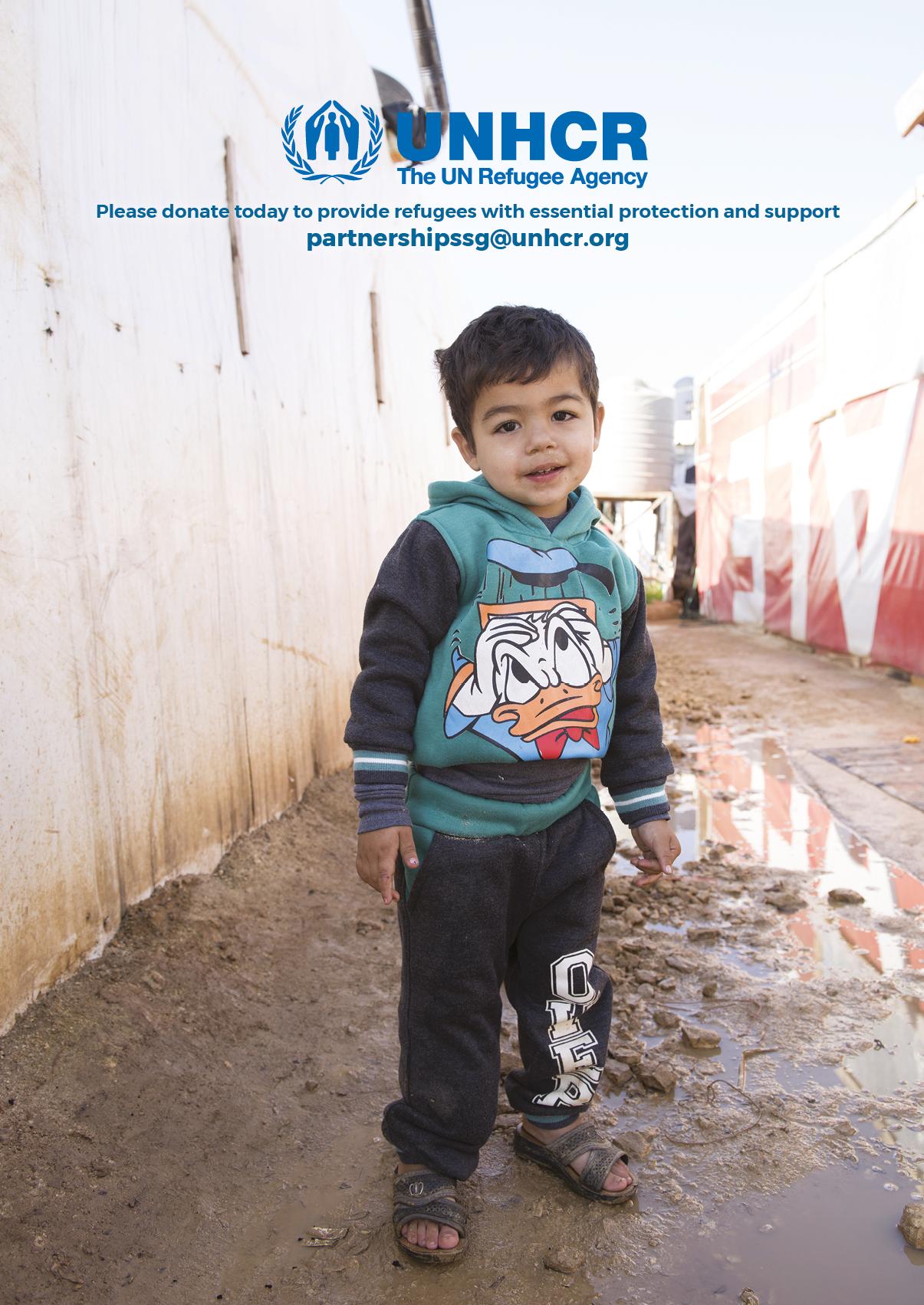
Connecting Cultures, Inspiring Harmony
Segmento – Unapologetically Italian Issue XXXII • September-November 2023
Cover Photographer
Deshani Berhardt Model
Dorcas Maphakela

Publisher
Dr Giovanni Butera segmento@segmento.com.au
Editor
Daniele Foti-Cuzzola editor@segmento.com.au
Assistant Editor and Translator
Christopher Fotheringham
Graphic Artist
Aurora Delfino design@segmento.com.au
Website & Social media

Ambra Dalmasso & Edoardo Vijge socialmedia@segmento.com.au
Advertising on Segmento +61 410 860 036
For general enquiries and back issues +61 410 860 036 segmento@segmento.com.au
Contributors to the XXXII Issue of Segmento
Photographers
Vincenzo Cascone
Catherine Cervasio
Joe Kramm
Elena Rajani
James Rogers
Sylvia Zanon
Writers
Lorenza Bini
Catherine Cervasio
Ambra Dalmasso
Christopher Fotheringham
Daniele Foti-Cuzzola
Innocenza Giannuzzi
Federica Mancusi
Bruno Mascitelli
Vincenzina Nicolazzo
Martin Plowman
Elena Rajani
Isabella Vagnoni
Distribution
AU Melbourne
AU Sydney
AU Perth
AU Adelaide
AU Brisbane
AU Canberra

AU Cairns
CN Beijing
IT Italy
JP Tokyo
NZ Auckland
SIN Singapore
Subscription www.segmento.com.au/signup-page segmento@segmento.com.au
Segmento Pty Ltd

203 Maribyrnong Road, Ascot Vale 3032
Victoria Australia
Segmento acknowledges the traditional owners of the lands on which this publication was prepared and published. We pay our respects to Traditional Elders past and present. We pay respect to the age old traditions of all indigenous people.

segmentomagazine @segmento_magazine
Segmento proudly supports
The UN Refugee Agency is dedicated to saving lives, protecting rights and building a better future for refugees, forcibly displaced communities and stateless people. For donations please contact partnershipssg@unhcr.org
EverGreening focuses on massive land restoration efforts to address food insecurity, rural poverty, climate change and land degradation. For donations please visit www.donorbox.org/green-up-to-cool-down
Disclaimer: The Editorial Staff ensures that all details are correct at the time of printing, however the publisher accepts no responsability for errors or innaccuracies.

Issue XXXII, Sep Nov 2023
A New Era for Old Traditions







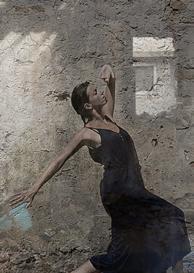
EMAIL segmento@segmento.com.au | PHONE +61 410 860 036 Subscribe For lovers of all things Italian XXV, Dec 2021-Feb 2022 Love, Art, Power and Divine Inspiration Issue XXVII, Jun-Aug 2022 in a Global World of Change Identity and Belonging Issue XXVIII, Sep-Nov 2022 THE MANY SHAPES OF BEAUTY La Bellezza XXIX, Dec 2022 Feb War ... or Peace?
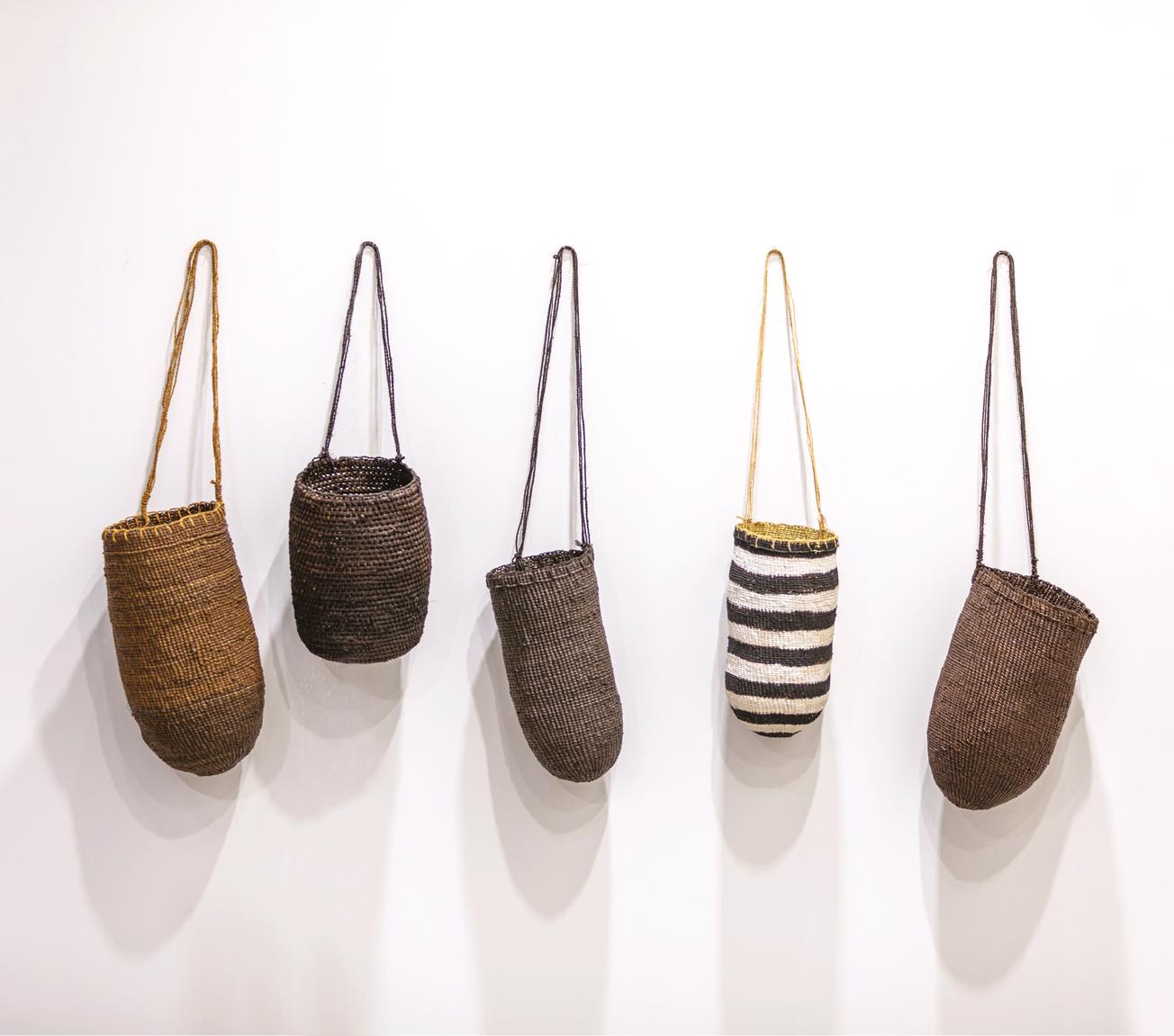
This issue is about the transformative power of cultural exchange. It is a call to bridge the gaps between ethnic groups and generations, to celebrate our differences, and to experience the beautiful synergies that can result when the old and new, the foreign and the local, and the strange and the familiar collide. In a world that, on the one hand, is becoming increasingly interconnected and, on the other, is seeing ethnic nationalism rising like an awful specter, it is important to remind ourselves of what we stand for. As a magazine born of the Italian diaspora in Australia, Segmento is committed to the values of multiculturalism and the idea that the things that make us different can also bring us together.
In this issue, you will read about Italian music heroes Antonio Corsi, a musician turned politician who is leveraging the allure of folk music to bring Italians abroad home, and Australian Breana Stillman, with her projects using opera as outreach among children in impoverished communities. You will discover how modern designers commune with ancient myths, legends, and folk tales to produce fantastic new creations and how an iconic Italian postmodern architect drew on the architectural tropes of Italy’s past and the splendor of its landscapes to pioneer a distinctive design language. We interview
chefs who value tradition but revel in innovation and an Italian-Australian comedian who has gained a broad following by making light of experiences we can all relate to, regardless of our background. We celebrate a multicultural film festival, a debut Italian novelist, and discuss trade and industry in a changing world. It is also our distinct pleasure to showcase our contribution to celebrating folk dance and music with an article presenting the 2023 Segmento Tarantella Festival in Melbourne this November. This issue about old traditions for a new era is not about stagnation or resistance to change. It is a celebration of adaptability. It is about finding relevance in the modern world without sacrificing our past. By embracing the cross-pollination of cultures, art forms can blend, cuisines can fuse, and stories can intertwine.
Buona lettura!


7
Editorial
Segmento Issue XXXII • Sep - Nov 2023
Daniele Foti-Cuzzola


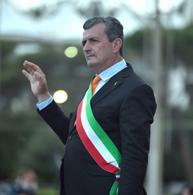
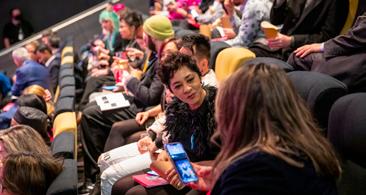
8 Segmento Issue XXXII • Sep - Nov 2023 CONTENTS Music and Roots by Vincenzina Nicolazzo Standing up for More than Just Comedy by Daniele Foti-Cuzzola Tarantella returns to Melbourne by Christopher Fotheringham ART & CULTURE Opera and Outreach by Federica Mancusi The Many Faces of the Puppet who Wanted to be a Real Boy by Martin Plowman Multicultural Film Festival by Daniele Foti-Cuzzola 10 14 26 37 14 18 21 31 GLOBAL & SOCIAL ENGAGEMENT SPECIAL FEATURE Editorial Viva Voce A Tavola Under the Cover The Unapologetics Alla Scoperta 7 34 58 71 77 78 31 10
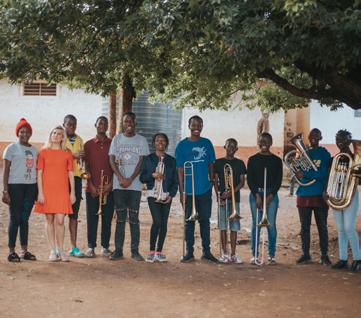
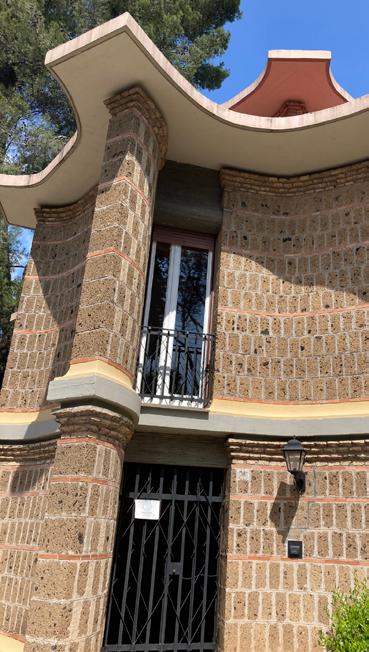
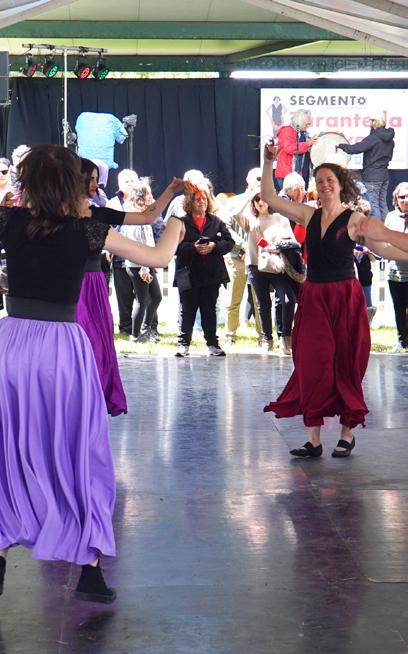

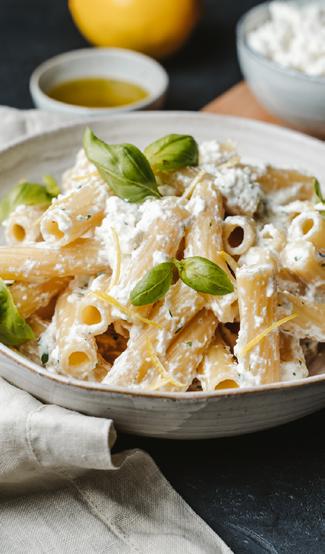
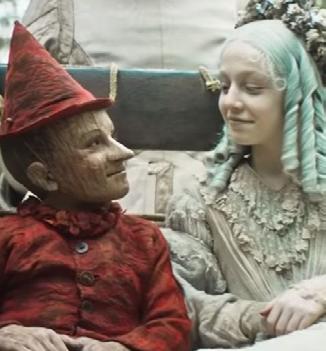
9 37 40 FASHION & DESIGN A Siren’s Song in Fashion and Design by Christopher Fotheringham Story of a Postmodern Italian Architect by Elena Rajani Segmento Issue XXXII • Sep - Nov 2023 BUSINESS & INNOVATION Thatʼs Amore Cheese: una Storia Italiana by
Bini Art or Business? Why Choose? by Ambra Dalmasso Italian Trade with Australia
61 64 66 40 26 58 18 53 21 53 55 CUISINE & FOOD From Panko to Pan Grattato
Stefano De Pieri’s Recipe for Success
Cervasio TOURISM & PLACES A Leisurely Trip along the Via Aurelia by Catherine Cervasio Mythical Creatures, Angry Goddesses, and Undying Lovers by Isabella Vagnoni 45 49
Lorenza
by Bruno Mascitelli
by Daniele Foti-Cuzzola
by Catherine
MUSIC AND ROOTS
A MUSICIAN TURNED MAYOR PROMOTES FOLK MUSIC AT THE HIGHEST ECHELONS
Interview by Vincenzina Nicolazzo | Images provided by Antonio Corsi
Antonio Corsi, a band leader and mayor, has spent his life serving the citizens of his tiny hometown and investing in its musical traditions. On the occasion of the Tarantella festival, Segmento interviewed this folk music hero.
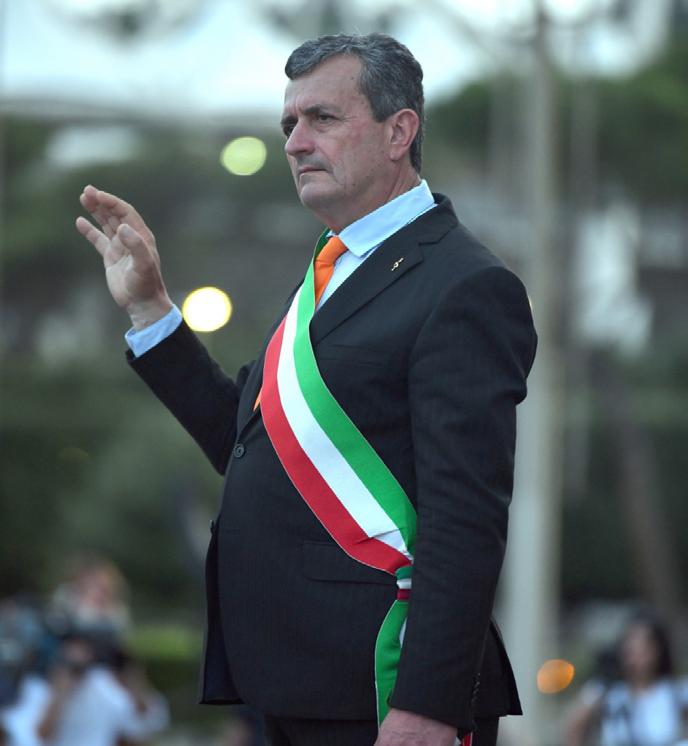
Sgurgola, however, has been fortunate. For the past 25 years, the town has been led by Antonio Corsi, a committed and farsighted mayor who has poured his heart into improving the well-being of his fellow citizens by leveraging the value of local traditions. First, as a musician and second, as a politician, he has passionately devoted himself to the musical traditions of his town and built on its well-established heritage–Sgurgola can boast of having a traditional town band since the end of the 19th century.
Perched on a hill in the Apennines, some 60 kilometers south of Rome, is the charming village of Sgurgola in the province of Frosinone. With only around 2,300 inhabitants, as with thousands of other hamlets scattered throughout Italy, Sgurgola is tranquil and picturesque, but with not much going on, and threatened by a declining population.
A young Corsi took up the baton of the town’s band leader, a role he could never have imagined for himself but which fate had in store for him. He excelled in keeping the proud local traditions of Sgurgola alive and became a tireless advocate for Italian folk music throughout Italy and beyond. In recognition of his dedication to Italian folk music, Corsi has received support from the highest state institutions–most recently, the Minister of Foreign Affairs and International Cooperation, Antonio Tajani, appointed Corsi to the role of Aide to the Minister for the Promotion of Cultural and Musical Traditions among the Italian Community Abroad.
The story of Antonio Corsi’s life and political career is not typical. It is not one of ambition or steadily rising through the ranks of party politics. It is rather the story of a lifelong dedication to his community and the local band that animates the events of his hometown. His musical endeavors
10
GLOBAL & SOCIAL
ENGAGEMENT
Segmento Issue XXXII • Sep - Nov 2023
Prof. Antonio Corsi
began while growing up in Sgurgola: he wanted to become a doctor, but in a rare reversal of the usual narrative, his father, who had been in the local town brass band since it was re-formed in 1971, discouraged him from pursuing medicine and urged him to take up music. He joined his father’s band and learned to play the trumpet. His music teacher recognized his aptitude for music and encouraged him to apply for a bursary to attend the Conservatory of Santa Cecilia in Rome, where he achieved his diploma in trumpet before moving on to a degree in music. His academic achievements in music immediately distinguished him from his bandmates in the Sgurgola brass band. As Corsi explains, “This moment was the starting point that defined my future because when the Maestro retired, I was the only one with a music qualification, so they entrusted me with the band.” He was put in charge of the band at only 19, a massive responsibility for such a young man.
In addition to managing the band and organizing practice sessions, he was responsible for recruitment and training new band members because, as Corsi underlines, “if there are no students, the band dies.” Corsi excelled in his leadership of the town band and started his trajectory toward becoming a pillar of the Sgurgola community, which, as he quickly pointed out, was “thanks also to family, friends, and neighbors.”
Corsi’s visibility as a capable manager of the town band and a trusted community member prompted his entry into politics. A lawyer from one of Sgurgola’s oldest law firms recognized Corsi’s potential to shake up the local political landscape and approached him to run for mayor under the “Together for Sgurgola” banner. While initially reluctant to take on other commitments, Corsi was eventually convinced to participate in the 1994 election, which he narrowly lost, placing him on the opposition in the town council. Three years later, in 1997, when the town council collapsed, Corsi found himself in the majority and became Mayor of Sgurgola, a position he has held since.
Corsi adeptly entangled music and active citizenship, and in 1997, at a music conference in the Municipality of Grotte di Castro, Province of Viterbo, he was approached by Antonio Tajani, who told him that Silvio Berlusconi wanted to meet him. After a series of phone calls and personal meetings with the Prime Minister, Corsi was invited to form a musical movement for Forza Italia called Musica Azzurra, for which he put together a brass band to perform at campaign events and rallies—aboard the campaign’s yacht, Nave Azzura.
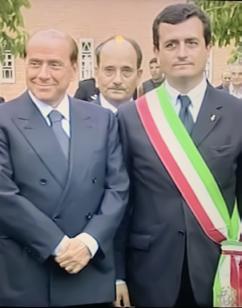
During this time, Corsi also worked at an institutional level to promote folk music nationally.
He was instrumental in establishing the
11 GLOBAL & SOCIAL ENGAGEMENT
Segmento Issue XXXII • Sep - Nov 2023
Prof. Corsi with Silvio Berlusconi
National Folk and Amateur Music Day in 2004, and every year since then, on the third Sunday of May, traditional folk music groups are given a public platform and state support to showcase their talents and musical heritage. These are held in piazzas of every town in Italy, bringing communities together and creating a sense of pride in local traditions. By 2011, on the occasion of the 150th anniversary of the unification of Italy, Corsi was entrusted with the role of Counsellor to the Minister of Culture, Sandro Bondi, and, with the President of the Board of Trustees, Giuliano Amato, worked to give folk bands and amateur music groups official recognition. Around 5,000 bands, 5,500 choirs, and 800 folk groups are now supported.
Antonio Tajani, who was made Minister of Foreign Affairs and International Cooperation following last year’s elections, called on his old friend to help establish stronger links with the Italian diaspora. The Minister recognized Corsi’s long government service and stalwart dedication to safeguarding folk music traditions by inviting him to take up a new role to promote the musical and cultural heritage of Italians living abroad.
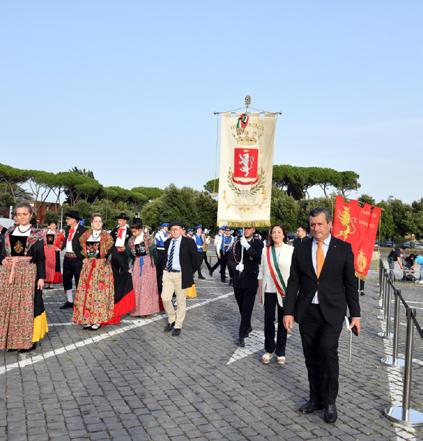
On behalf of the Ministry of Culture and the Ministry of Foreign Affairs, Corsi is currently overhauling and extending an ongoing 20 million euro joint project, Turismo delle radici , ( Roots’ Tourism) which is to be completed in 2024, involving comuni with small populations in enterprises that leverage local folk music and cultural traditions as an asset of national importance. Corsi wants to do for thousands of struggling towns and villages

12 Segmento Issue XXXII • Sep - Nov 2023
GLOBAL & SOCIAL ENGAGEMENT
Prof. Antonio Corsi and the Sgurgola town band
of under 6,000 inhabitants what he did for Sgurgola. Turismo delle radici is a tourism initiative based on family history and cultural roots to attract the descendants of Italians living abroad to visit their place of origin. It currently involves around 800 comuni, from Val d’Aosta to the islands and everywhere in between.
Music provides small communities a focal point for events and activities promoting social cohesion. In June 2023, to celebrate the Festa Europea della Musica, the Ministry of Foreign Affairs and International Cooperation held a Turismo delle radici event attended by representatives of 20 comuni, one per Italian region, along with an accompanying folk group or choir. Corsi instituted an innovation when he took over the project to establish a dynamic link between the musical and cultural initiatives to help create revenue streams for these small towns and to strengthen links between them and the descendants of Italian emigrants worldwide. Each participating town has been required to set up a standing committee to manage funds earmarked for Bentornati a casa , (Welcome Home) a project under the Turismo delle radici strategy.
Bentornati a casa is designed to provide infrastructure for welcoming and hosting visitors of Italian origin–whether second, third, or even fourth-generation–in the towns and villages of their ancestors. Funds are being used to digitize archives in local record offices, set up and maintain museums of immigration,
establish itineraries, and promote cultural, musical, and culinary activities aimed at visitors from the diaspora. Corsi hopes to encourage investment by establishing concrete links between Italians abroad, their descendants, and the towns and villages of origin.
Antonio Corsi is certainly the man for the job with his extensive experience, dogged commitment, inexhaustible enthusiasm, and achievements. Having already successfully included towns of over 6,000 inhabitants in the project, the next step will be to raise the awareness of Italians abroad and publicize these initiatives in the form of events that involve them at both the practical and emotional levels as protagonists in their return to Italy.
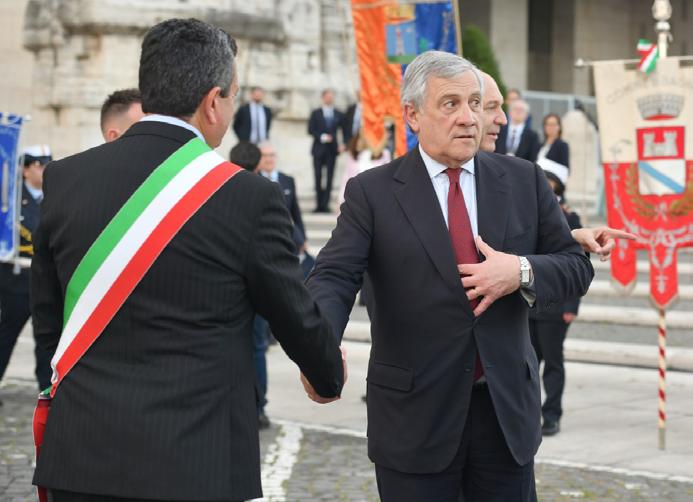
13 Segmento Issue XXXII • Sep - Nov 2023
GLOBAL & SOCIAL ENGAGEMENT
Antonio Tajani Italian Minister of Foreign Affairs
STANDING
UP FOR MORE THAN JUST COMEDY JAMES LIOTTA TALKS ABOUT COMEDY AND COMMUNITY
by
Daniele Foti-Cuzzola | Images
provided by James
Liotta
James Liotta (left) with Tahir Bilgiç and George Kapiniaris

From sauce day high jinks to salami-making weekends, James Liotta’s hilarious anecdotes about growing up in an Italian-Australian family have resonated profoundly with audiences. His tales have cemented his reputation as one of Australia’s most sought-after ethnic comedians. Issue XXXII • Sep - Nov 2023 14 GLOBAL & SOCIAL ENGAGEMENT
Like Joe Avati, George Kapiniaris and Tahir Bilgiç, James Liotta’s stories about his ethnic roots have not only struck a chord with immigrant communities, granting them representation on stage, but have also given the wider Australian community a better understanding of diasporic experiences across the country. Liotta explains the role of ethnic comedians as he sees it, especially in representing immigrant communities.
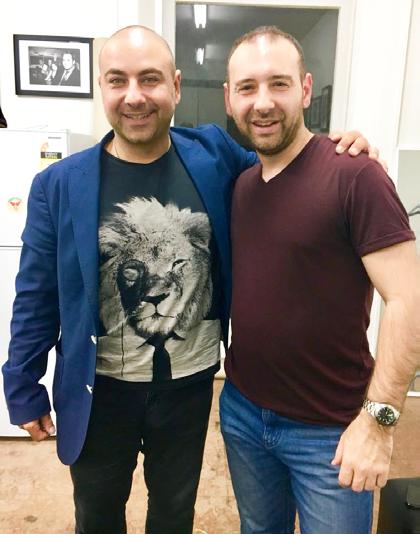
We, as ethnic comedians, always remind audiences that we are not making fun of ethnic people, but are celebrating them. With comedy, you need to exaggerate! We are telling stories of people that we love and what we went through. The average person who used to look at us and say, “Oh, you’re Italian,” and call us all kinds of names maybe didn’t think we would amount to anything, but we have amounted to a lot and given back to our communities–everyone has their path.
Liotta’s Italian family heritage and traditions have influenced his on-stage material and artistic career. Apart from owning pizzerias and restaurants, Liotta’s father, Sebastiano, wrote and produced plays for the Italian community under his production company, La Comica Variety, where a young James got his start.
Sebastiano was a very good writer and would write in his native Italian language for the Italian community. He did this for over 20 years, and he worked with a cast who would
just do it for love and passion. When I was around seven or eight, he started writing characters for me. I always loved performing. I grew up in a family where I would see my father perform–even for his friends. He was just a great joke-teller. He loved telling jokes and putting on characters, so that was my first entry into performing in Italian.
Liotta spent the next two decades performing in his father’s plays, and as he matured, he also ventured into directing. “Never work with your father if you’re directing plays,” he jokes.
It’s very difficult, especially with an Italian father. They don’t like to let go, and it’s like, “Well, I’m the director now,” but it was a
15 Segmento Issue XXXII • Sep - Nov 2023
GLOBAL & SOCIAL ENGAGEMENT
James Liotta with Joe Avati
wonderful experience, and it was beautiful to start performing in the Italian language. But performing is performing. The rules of the craft of performing are the same. The language you speak doesn’t matter.
Liotta regularly collaborates with fellow ethnic comedians Avati, Kapiniaris and Bilgiç. “We work altogether because we realize that our stories are relatable, and as we’ve been discussing, we can bridge the gap with our stories between how we grew up, and how our nonni grew up and what they brought here.” However, with the passing of older generations, the relevane of these stories is diminishing for young people, so he continually reinvents his approach to keep his material fresh.
Comedy has changed and will continue to change, and unfortunately our nonni are fading away, and it depends on whether their traditions are being upheld. You can be funny in that area only if your stories are relatable. You have
to find a way to talk to young people and get their interest by taking them back to a time before they were born, “this is what it was like then, and this is what it is like now.” This comparison is what creates humour.
Liotta’s father, who immigrated from Sicily, wrote plays blending Italian and English to accommodate his Italian-Australian audience. “He would piece together a word in Italian and a word in English to bring us together.” Much like his father, Liotta finds himself modernising his craft to mirror changes within the ItalianAustralian community.
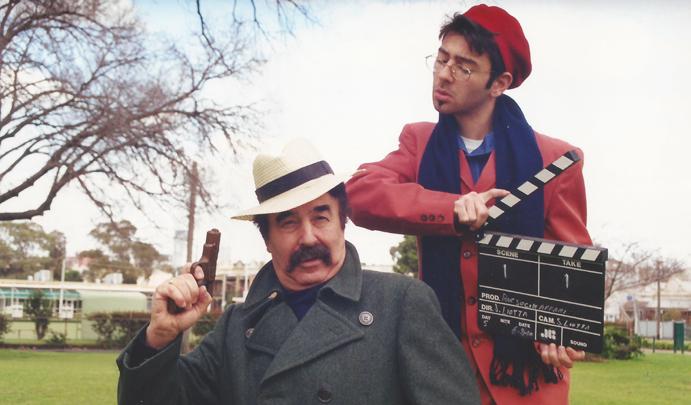
We have to find new avenues for the audience to relate with. We have to look at other ways people are growing up, and we have to start looking at a different generation of Italo-Australians and what they are doing and extract comedy from there because, little by little, things are changing. You can only do so many jokes about sauce day.
Liotta credits Italian-Australian comedian Joe Avati as an influence in his new direction. “Joe no longer tackles just Italian topics. He has a show tracking anything and everything from the perspective of an Italian person. You use your Italian character to look at the world differently,” he says on the evolution of his comedy. Nevertheless, as Liotta’s comedy continues to evolve, his comedic flair, energetic performances, and unique observations as both an “insider” and an “outsider” will undoubtedly keep audiences gasping for air from their laughter.
16 Segmento Issue XXXII • Sep - Nov 2023 GLOBAL & SOCIAL ENGAGEMENT
James Liotta with his father
LOVE. LAUGH.


PROTECT.
animals with kids the earth
OPERA AND OUTREACH
MUSIC IS TOUCHING THE LIVES OF THE LESS FORTUNATE THANKS TO OPERAFFINITY AND ITS FOUNDER BREANNA STILLMAN
by Federica Mancusi | Images provided by Breana Stillman
Musician Breana Stillman credits the Italian community in Victoria for inspiring her love of opera. Breana talks to Segmento about a music festival in her adopted town of Todi in Umbria and OperAffinity’s commitment to bridging cultural gaps.
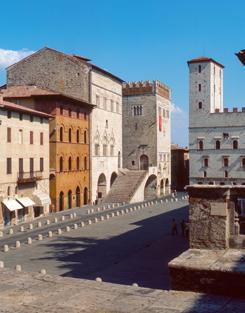
New York, and Italy before taking a contract at the state opera house in Kassel, Germany. When I first moved to London, I also took a job in private equity that I continued throughout my studies and in between singing contracts. I worked for a firm that supported my operatic career and provided me with a wonderful experience in fundraising and business that has come in handy in my work with OperAffinity. How did OperAffinity come about, and what is its main mission?
Tell us about your background in music and management that led to the founding of OperAffinity.
My love for music surprised my family. They were not musical. I started playing the piano at the age of 6 and then took up the flute and saxophone, but singing filled my heart with joy. I was extremely fortunate with all my music teachers, who played a big part in my wanting to inspire younger generations and pass on the wonderful experience that music gave me at a young age. After completing my education in Australia and the UK, I participated in opera studios and performed in Germany,
Music had such a powerful impact on my life when I was younger, and I knew how important music is for African culture, so I thought I would bring a group of musicians that I had worked with in Europe to the poorer areas of Kenya and try and make a difference through music. The workshops were so successful that we worked with 6,000 children on our first visit. I felt I had found my calling. I was so lucky to be given the gift of learning music when I was a young child, and I wanted to pass on this gift to younger generations, no matter their background. In 2019, I founded the association OperAffinity, and since then we have set up workshops in Kenya, the UK, Germany, and Italy for the benefit of all children. This includes working with children with disabilities and those from refugee communities, giving children from disadvantaged backgrounds the opportunity to learn music and even perform internationally. Our mission is to bring opera and classical music to a wider
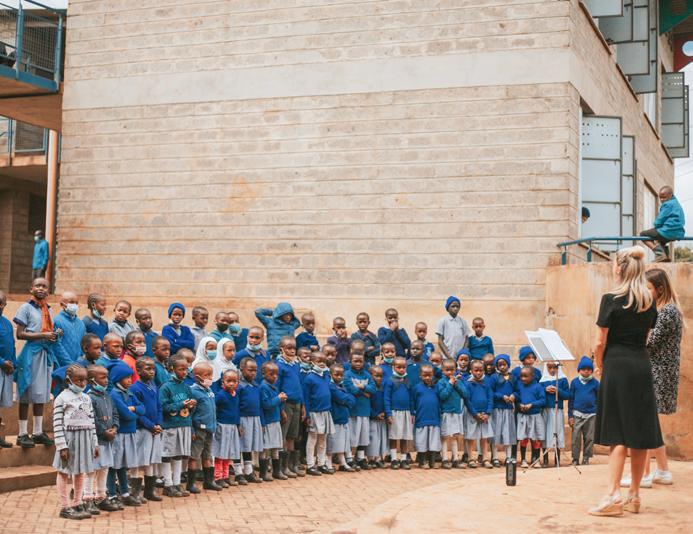
18 Segmento Issue XXXII • Sep - Nov 2023 ART & CULTURE
Breana Stillman bringing opera to children in Kenya
Todi Piazza
audience regardless of their background and use music as therapy to inspire and educate.
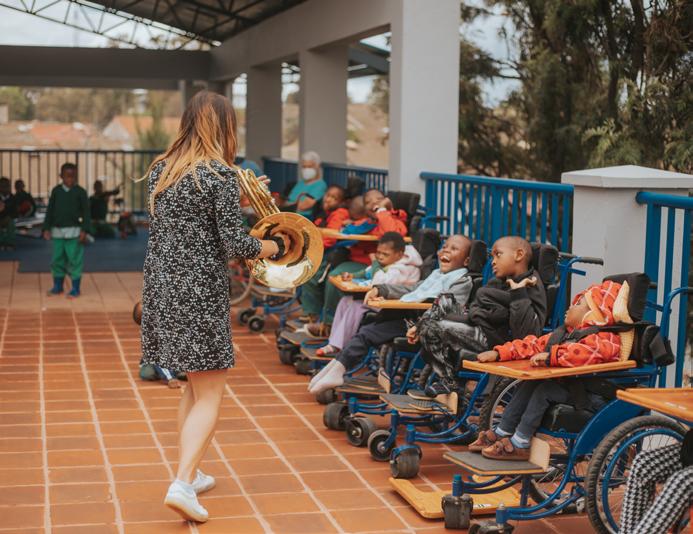
Why do you think music, and opera in particular, connects people from all walks of life?
When I first decided to bring opera and classical music to Kenya, I was unsure how children from a different cultural background would react. I don’t think I could have ever anticipated its impact on all of us. I think music is a powerful force and a universal language that breaks down barriers between different cultures and religions and unites us all as humans. There is something about music that connects us at an emotional level and transcends any differences.
You are currently preparing for the inaugural Todi Musica Festival. What can visitors expect from this festival?
We wanted to create top-quality performances and unique experiences for the local community and visitors in one of Italy’s most beautiful and culturally renowned towns. We wanted to open the masterclasses and involve the public in giving young artists as many performance opportunities as possible.
What do you hope audiences and residents of Todi will take away from the festival?
So much of my operatic journey was shaped by my connection with Todi. It is an internationally-renowned destination
with a strong expatriate and local community which has a love for the arts. I always dreamed of creating music events that would attract world-class musicians to Todi.
In addition to Todi Musica Festival, OperAffinity is involved with some incredible causes. Can you tell us about those and some of your recent work?
Through OperAffinity, I have had the opportunity to work with so many amazing organizations that are doing similar work to us. I think finding ways to work together to have a greater impact is incredibly important. Through a
19 Segmento Issue XXXII • Sep - Nov 2023 ART & CULTURE
Breana Stillman leading a music workshop for disabled children
remarkable organization in Kenya called Ghetto Classics, we worked with hundreds of children in Nairobi over the last 12 months. We gave a young tenor from the slums in Korogocho, David Mwenje, the opportunity to sing in Rome at the 50th anniversary of relations between the Vatican and Australia.
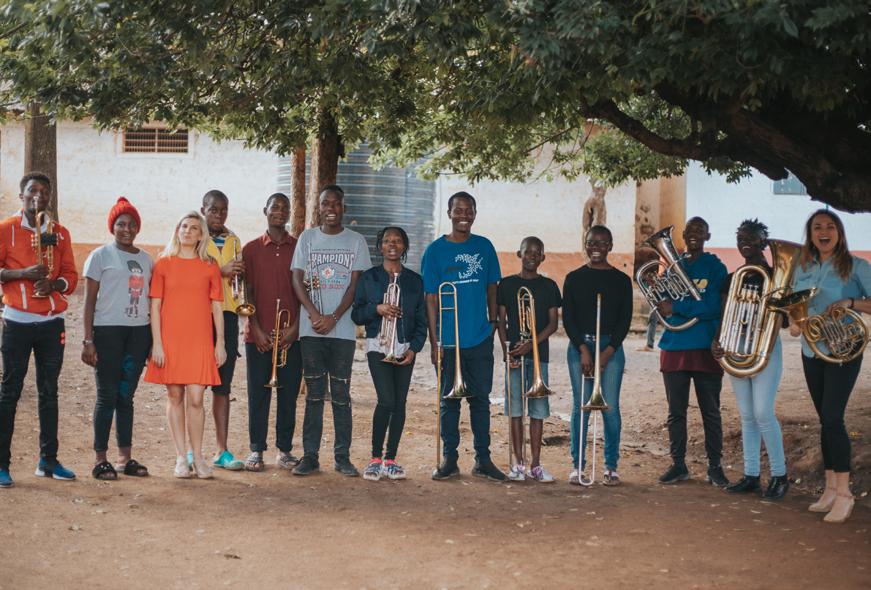
It’s been a remarkable year for OperAffinity. What are your hopes for the future?
I hope the organization can continue to grow and have a positive impact. Using my network of musicians and educators, I have worked to create events and programs that inspire new generations, which is an absolute dream come true. I

hope to continue to grow the festival and find ways to involve the community in the outreach work I do with OperAffinity so as to give young musicians performance and educational opportunities.
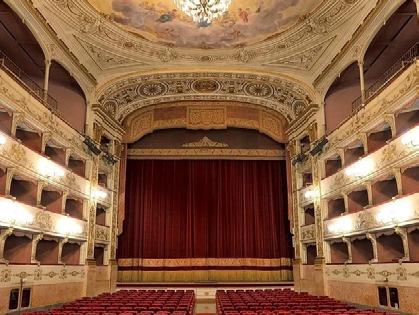
20 Segmento Issue XXXII • Sep - Nov 2023
Breana Stillman
Breana is taking opera out of the opera house and into the streets
ART & CULTURE
Ghetto Classics workshop
THE MANY FACES OF THE PUPPET WHO WANTED TO BE A REAL BOY
by Martin Plowman
Pinocchio might have been written for children and interpreted as a coming-of-age story, but it has always been a story about coming into being.
Pinocchio, the puppet who dreams of becoming a real boy, is arguably best known in the English-speaking world through the 1940 Disney film. However, the original Le avventure di Pinocchio ( The Adventures of Pinocchio ), written by Italian revolutionary and satirist Carlo Collodi in 1881–82, was intended to be read on multiple levels. On the surface, it operates as a moral tale, urging children to stay in school to avoid becoming “donkeys,” literal beasts of burden. However, it is also a satire of the newly-unified Italian state, a darkly picaresque tragicomedy in which Italians could recognize their national strengths and foibles. The many versions of the Pinocchio story that have followed all have their share of social commentary, including the Disney version. It’s a lot for one little boy to carry on his shoulders. Lucky for him that he’s made of stout wood.

Carlo Collodi, whose real name was Carlo Lorenzini, was born in Florence in 1826 in what was then the Grand Duchy of Tuscany. As a young man, Collodi fought
in the Wars of Italian Unification, known in Italy as the Risorgimento. Afterward, he became a journalist, gaining a reputation as a liberal satirist. Although Collodi certainly wrote Pinocchio for children–it first appeared in weekly installments in the children’s newspaper Giornale per i bambini –he used the story to express his disillusionment with the failings of the newly-minted Italian state. In the 2021 English version, translators John Hooper and Anna Kraczyna point out in their introduction that Collodi’s “fairy tale” is, in fact, a searing indictment of the widespread poverty, corruption, poor education, and social discord that plagued Italy in the 1880s. Pinocchio’s quest to become a real boy mirrors what Collodi saw as the still incomplete project of the Risorgimento. Like the makeshift puppet
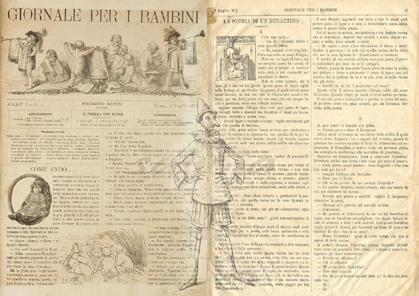
21 Segmento Issue XXXII • Sep - Nov 2023
Pinocchio as represented in the 1940 Disney adaptation
ART & CULTURE
Pinocchio by Carlo Collodi in Giornale per i Bambini
boy, only by relying on native pluck and courage could this construct of disparate parts overcome the many hardships and setbacks along his path before it could achieve anything resembling a unified identity.
Little of Collodi’s commentary would make it into Walt Disney’s film. In the studio’s much-anticipated second featurelength animation (coming after Snow White and the Seven Dwarfs in 1937), the Italian setting is almost completely erased. Instead, the story takes place in a snowy, mountainous country resembling Central Europe, with the only recognizably Italian character being the villainous puppet master Stromboli, named after the volcanic island off the coast of Sicily. The Stromboli character is little more than a swarthy-skinned racist stereotype, prone to gesticulating wildly and cursing in an Italian gibberish invented by the Dutch
actor who voiced the role, Charles Judel. These changes, however, were more than cosmetic. Removing the Italian setting was a deliberate political choice to distance the animated feature from Mussolini’s Italy, which would join World War II on the side of Nazi Germany in June 1940, barely three months after the film’s release. Disney alters Pinocchio’s key message profoundly, shifting it from a call for Italian national unity to a celebration of American values, which one critic described as “deferred gratification, self-denial, thrift, and perseverance.” Thus, Disney’s Pinocchio is famously punished by having his nose grow whenever he tells a lie, a device that barely appears in the original story. Just as Collodi’s tale was a restorative model for Italian society of the post-Risorgimento period, Disney’s film was a moral template for the type of people Americans would need to become with war looming on their horizon. The Disney version is more a knowing reflection of world events than the film is usually credited with.
Finally, two recent film versions, one directed by an Italian and the other by a Mexican, both attempt to reclaim Pinocchio while updating the story to reflect contemporary concerns.
When Matteo Garrone’s Italian production of Pinocchio was released in 2019, English-language critics were baffled, alternately praising its visuals and storytelling and recoiling at what they saw as wanton grotesquery. One reviewer for The Independent described the film as “A
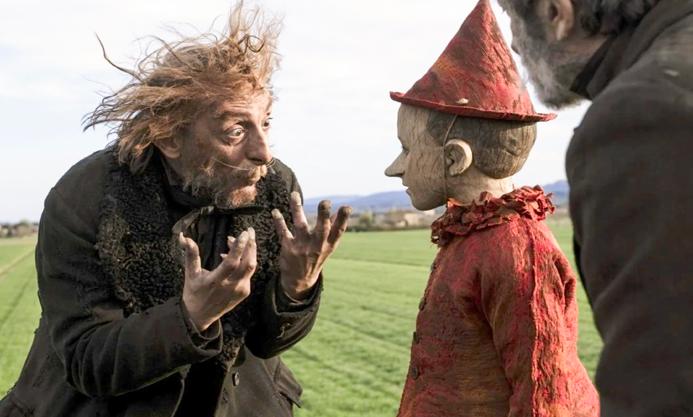
22 Segmento Issue XXXII • Sep - Nov 2023
ART & CULTURE
A scene from Matteo Garrone’s Pinocchio, 2019
beautiful, nightmarish vision destined to frighten children.” Garrone’s version is arguably the most faithful celluloid adaptation yet, building on the elements of Collodi’s social critique that remain relevant for Italian society today, such as the persistence of poverty and judicial corruption.
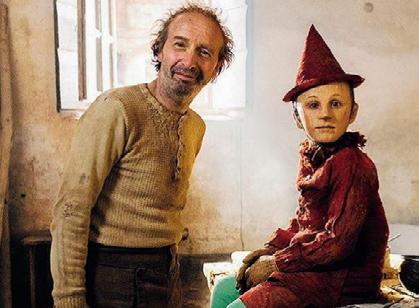
An absurdist scene where an anthropomorphic gorilla-as-judge sentences Pinocchio to jail for honesty is a particular standout. Garrone’s film departs significantly from the book in its treatment of children. Collodi’s message to his young readers to stay in school is much more circumspect here. When Pinocchio finally goes to school, he encounters a sadistic cane-wielding teacher who teaches by rote and punishes his students by making them kneel on dried chickpeas. Children are otherwise conspicuously absent from the
film except for the scenes in the classroom and Toyland (reimagined here as a walled compound in rural Puglia). This Italy is strangely quiet and underpopulated, with most of the adult characters we encounter being middle-aged or elderly. With Italy’s population aging rapidly and in steep decline–some projections tipping it to drop by more than four million people over
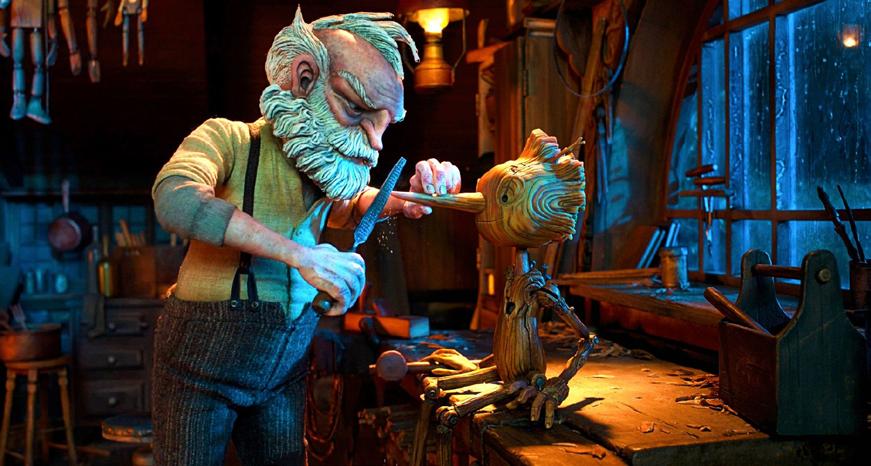
23 Segmento Issue XXXII • Sep - Nov 2023
A scene from Matteo Garone’s Pinocchio
ART & CULTURE
A scene from Pinocchio by Guillermo del Toro, 2022
the next twenty-five years–the allegory on the country’s current trajectory would not be lost on Italian audiences.
At the other extreme, Guillermo del Toro’s 2022 stop-motion retelling traverses a terrain perhaps furthest from the original story. Many of Collodi’s characters and incidents are either cut or reimagined–Geppetto loses an actual human son in an air raid during World War I, while Pinocchio meets the personification of Death in the form of a ghostly chimera voiced by Tilda Swinton. Del Toro also reverses Disney’s de-Italianisation of the story by setting the story explicitly in Fascist Italy. As such, the film functions as an antiauthoritarian parable, where Pinocchio’s irrepressible spirit ironically makes him

the only free being in a totalitarian state of mindless puppets. In the single greatest departure from Collodi, del Toro’s puppet never transitions to become a “real” boy. He does not need to. Del Toro seems to be saying that Pinocchio is intrinsically more human than his makers by the strength of his heart.
In its many guises, the Pinocchio story prompts us to question whether we are truly human or puppets. However you see yourself, future storytellers will no doubt use Pinocchio again to explore how the human experience is never set in stone–or carved from wood, for that matter. Like Pinocchio, we are more than the material we are made from.
24 Segmento Issue XXXII • Sep - Nov 2023
ART & CULTURE
A scene from Pinocchio by Guillermo del Toro, 2022














SHARE YOUR BEST PHOTO WEARING SEGMENTO T-SHIRT, CAP TOTE BAG WIN A RETURN TRIP TO ITALY FOR 2! 1 2 3 TO ENTER THE COMPETITION: VISIT SEGMENTO.COM.AU TAKE A PHOTO (OR TWO!) TAG&SHARE ON YOUR PROFILE Choose your favourite t-shirt, cap or tote-bag. Available for shipping worldwide Wearing your favourite t-shirt, cap or tote-bag while visiting a special place or just having fun! Tag @SegmentoMagazine on social media and share your photo on your public profile by 31/12/2023 FCO ROMA SYD SYDNE Y FCO ROMA SYD SYDNE Y Terms&Conditions: The competition ends on 31/12/2023. The Editorial Team at Segmento will select and award “Segmento’s best picture of the year 2023” and will notify the winner by 31/1/2024. The prize consists of two economy class return tickets from anywhere in the world to Rome. Travel period: September to November 2024. Final dates to be agreed with the winner(s). The prizes that may be awarded to the eligible winner(s) are not transferable or redeemable for cash. Other standard terms & conditions apply. Please visit www. segmento.com.au.
TARANTELLA RETURNS TO MELBOURNE
TSEGMENTO 2023 TARANTELLA FESTIVAL BETTER THAN EVER
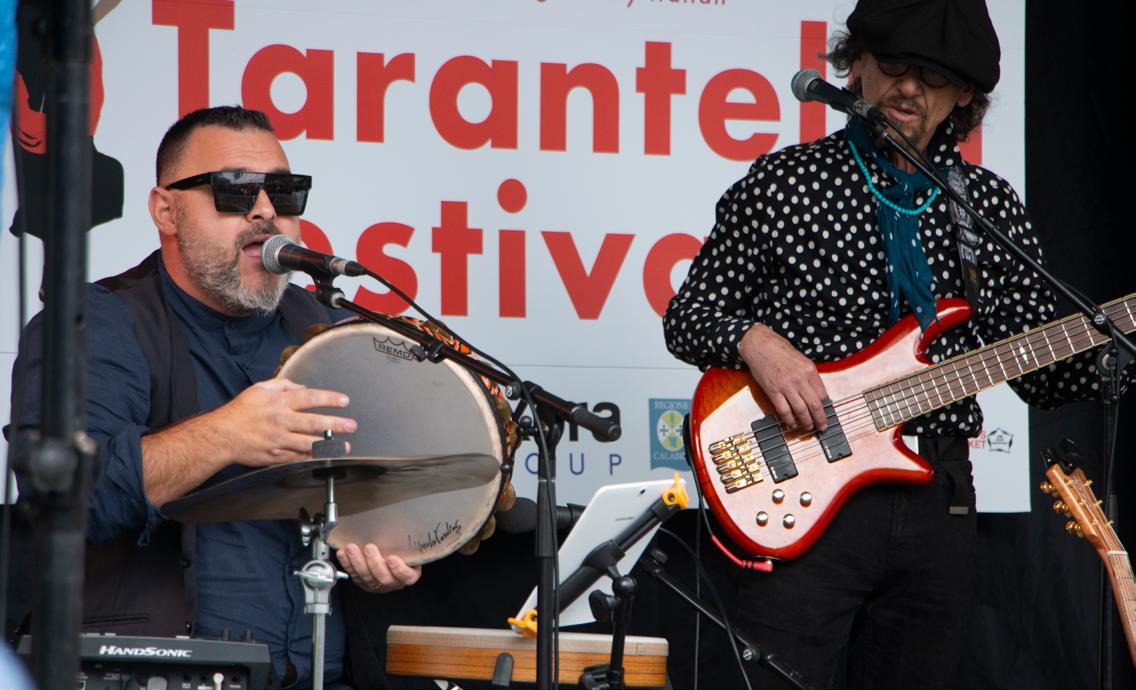 by Christopher Fotheringham | Photography by Vincenzo Cascone
by Christopher Fotheringham | Photography by Vincenzo Cascone
Now in its second year, the 2023 Segmento Tarantella Festival is set to be the biggest yet, with music and dance events, tamburello workshops, multimedia exhibitions, screenings, and much more to showcase the tarantella’s history and cultural richness.
Dance has always served as a means of self-expression and a medium for storytelling. Whether it be the ceremonial dances that Aboriginal Australian people have performed since time immemorial to recount tales from the Dream Time, the Dragon Dance in China, Hula in Hawaii, the Haka of Maori warriors and rugby players, Kathakali in Kerala and Diablada in the Andes with their elaborate costumes and colorful makeup, the Sirtaki in Greece, the masked dances of the Dogon people in West
Africa, across diverse cultures around the world have preserved and passed down their cherished dance traditions through the centuries.
One of the most globally recognised cultural dances is the tarantella–a cherished folk-dance originating from Southern Italy, but boasting diverse styles across the entire peninsula. This form of dance has been exported worldwide by the Italian diaspora. Extending even to Melbourne in a very public manner, because in November, the Segmento Tarantella Festival
26 Segmento Issue XXXII • Sep - Nov 2023
SPECIAL FEATURE
Felice Paone and The Rustica Project
will come to the city, serving as a focal point for this captivating art form.
The festival is set to bring together Australian, Greek and Italian artists (among them Alfio Antico, Antonio Grosso, and Annalisa Insardà), to provide an authentic and multi-immersive presentation of folkloristic traditional music and dance.

The festival aims to go beyond the confines of individual cultures and to be a bridge that unites the wider community and encourages people to embrace, recognise and celebrate traditional customs. Giovanni Butera, the Project Coordinator of the festival, explains:
The festival’s mission extends beyond merely showcasing traditional Southern European music and dance; it stands as a catalyst for forging connections, promoting communication, and nurturing inquisitiveness among a tapestry of communities, all in the name of enhancing cultural awareness. We at the festival believe that understanding different cultures and traditions in a globalized and multi-ethnic society is essential.
The origins of tarantella are varied and differ slightly from region to region throughout Italy. However, the most widely acknowledged form of the tarantella can be traced back to the 15th and 16th centuries in the Apulia region. This energetically
paced dance evolved as a remedy for individuals bitten by tarantulas. Women were primarily affected, likely due to their work in the tobacco fields of the region. The prevailing belief was that the venom-infected victim could only be saved by engaging in a trance-inducing frenzy of dance accompanied by music. According to legend, the unremitting and exerting dance movements were thought
Find out more about Segmento Tarantella Festival 2023 visiting the website

27 Segmento Issue XXXII • Sep - Nov 2023
Gabriele Macrì
SPECIAL FEATURE
to help the victim sweat out the tarantula’s venom. Over time, the tarantella evolved from a trance-inducing, healing ritual into a ceremonial dance for courtships and celebrations of marriage.
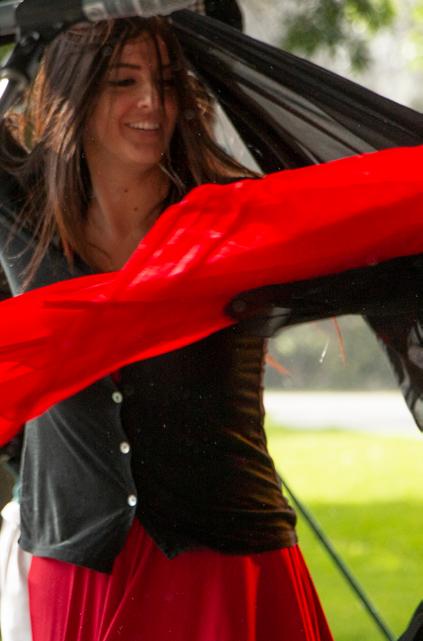
However, in 1959, Italian anthropologist Ernesto de Martino travelled to Salento to delve deeper into the tarantella as a healing ritual and discover its links to women in the area. His research found that the women who were supposedly affected by the bite of a tarantula had usually been suffering abuse, were languishing in arranged and loveless marriages, or were widowed and found themselves on the margins of society. De Martino, and later another researcher, Luigi Chiriatti, concluded that the dance gave these women an outlet to process their trauma and draw attention to their plight. Film director Edoardo Winspeare explored this concept in his 1996 film Pizzicata.
Today, aside from its legendary origin and its darker undertones, the tarantella is an expression of joy and gives people of all backgrounds and ages an opportunity to participate in a centuries-old tradition. Annual festivals like the Notte della Taranta in Italy attract such headliners as Mahmood, Marco Mengoni, and Elodie, along with crowds of thousands. The 2023 Segmento Tarantella Festival organizers hope this traditional dance not only lives on among Italian-Australians in Melbourne, but that it is embraced and explored by the city’s many other culturally-diverse communities.
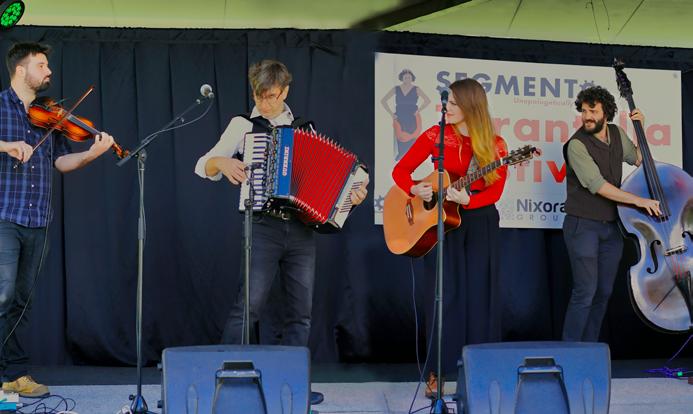
28 Segmento Issue XXXII • Sep - Nov 2023
SPECIAL FEATURE
Zumpa
Valentina Donato
PERFORMERS











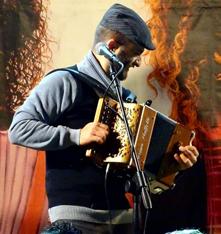



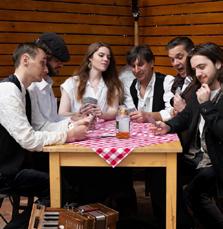
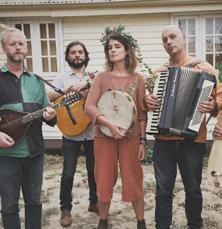

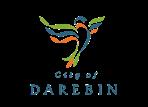





Segmento Issue XXXII • Sep - Nov 2023
Proudly supported by
Southern Italian Music and Dance
ZUMPA
THE RUSTICA PROJECT
SANTA TARANTA ANTONIO GROSSO
CICCIO NUCERA
MADDALENA GROSSO
GABRIELE GNAVA MACRI
DAVIS MUCCARI
SPECIAL GUEST Annalisa Insardà
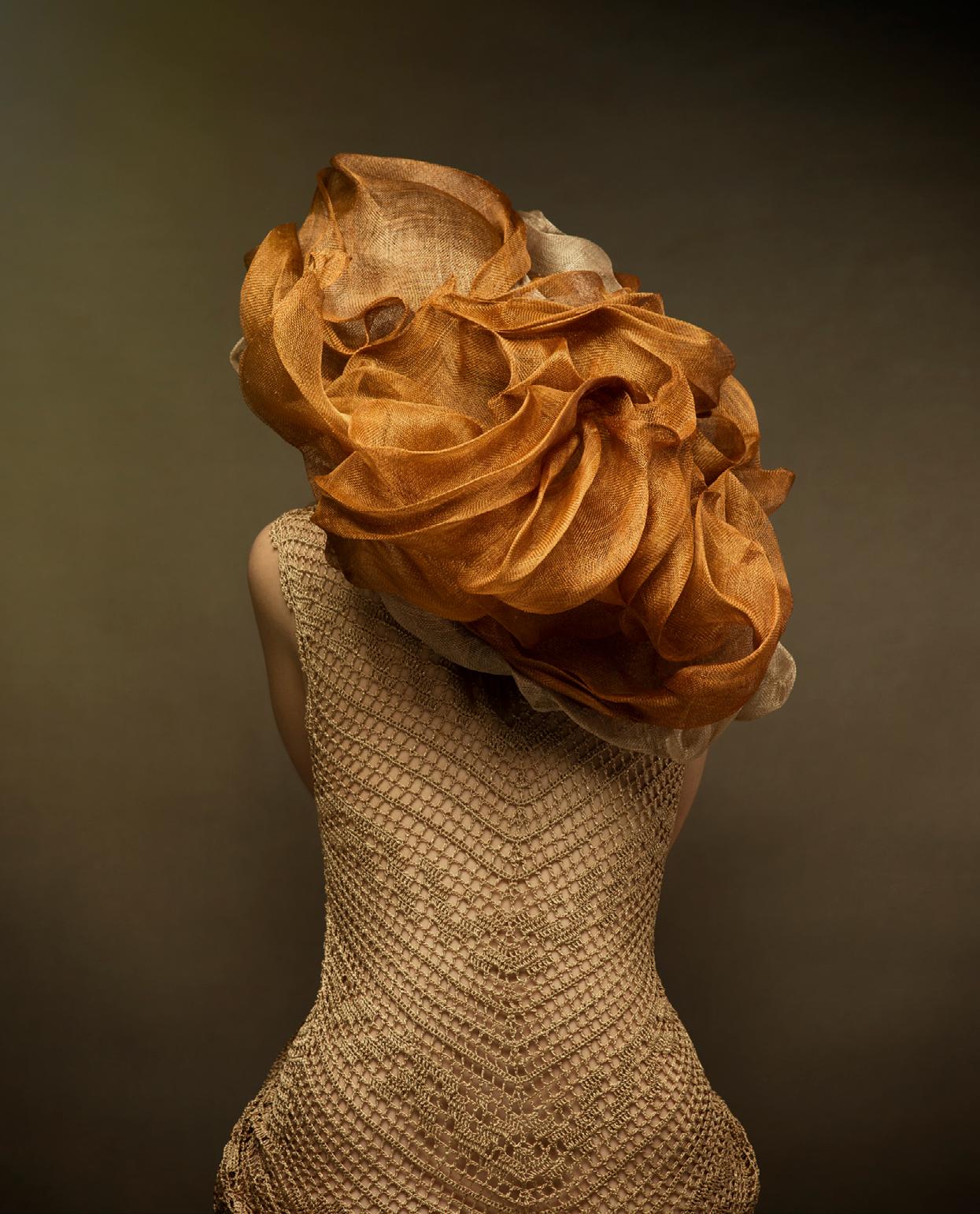

COSENZA - ITALY MELBOURNE- AUSTRALIA www.stevenshats.com | Australia Ph: 0410 860 036 eMail: info@stevenshats.com stevenshats@gmail.com
MULTICULTURAL FILM FESTIVAL A CELEBRATION OF AUSTRALIA’S DIVERSITY ON THE BIG SCREEN
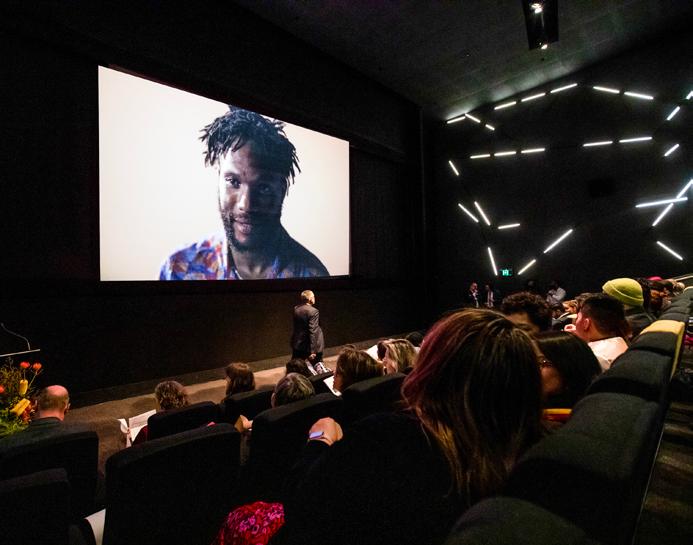 by Daniele Foti-Cuzzola | Images provided by Victorian Multicultural Commision
by Daniele Foti-Cuzzola | Images provided by Victorian Multicultural Commision


Segmento spoke with the Multicultural Film Festival’s Project Manager, Dr. Atalanti Dionysus, about the importance of multicultural representation on the big screen in Australia.
Despite the vibrancy of the Italian community in Australia, few stories that authentically depict the Italo-Australian experience have made their way into cinemas, onto network television, or even onto streaming platforms. Atalanti Dionysus, however, hopes initiatives like the Multicultural Film Festival in Melbourne, now in its fifth year, will inspire young filmmakers of all backgrounds, including Italians, to find their voice and utilize the platform to share their stories.
The Victorian Multicultural Commission is presenting the annual festival with Swinburne University of Technology. It celebrates multiculturalism through the lens of short films that explore stories of cultural diversity and living in multicultural Australia. Australia is home to people who identify with more than 300 ancestries from around the world, including Australia’s various Indigenous nations.
Dr. Dionysus explains at length how the festival celebrates Australia’s cultural richness.
It’s a short film festival screening films of up to 15 minutes that showcase cultural diversity and what it is like to live in Australia. Some of the films explore how immigrants arrived in Australia, whether as refugees or asylum seekers, how they live in a country where they
don’t speak the language, and how they’ve found their way, not only through language but also culture, food, traditions, and jobs. We have created an opportunity to showcase contemporary multicultural life among second-generation Australians, which is refreshing to see. We get to hear new young voices that are coming through and that are not censored due to their cultural background and ethnicity. A festival supporting young filmmakers helps us as researchers understand the multicultural space. Is the younger generation still facing the same issues
31 Segmento Issue XXXII • Sep - Nov 2023
ART & CULTURE
we faced in the 1950s, ‘60s, and ‘70s? These films showcase a wide range of experiences, including challenges related to racism, sexuality, mental health, acceptance, and bullying.
The Multicultural Film Festival is an opportunity to showcase Australia’s diverse multicultural landscape. Dionysus believes the universal themes and conflicts presented also demonstrate that we are all fundamentally the same. “We all live similar lives,” she explains. “Nothing is that different aside from things like language, some traditions, and food.”
As the daughter of Greek migrants, Dionysus hopes that the representation that the Multicultural Film Festival offers will allow young second-generation Australians to not only see themselves, their language, their culture, and their heritage on screen but to inspire them to keep telling their stories.

Seeing these films keeps these traditions and languages alive and keeps second and third-generation Australians connected to their culture. It’s a way to not let go and to nurture multicultural stories. That’s the criteria, and it’s been accepted so well, and it’s something so great to be a part of.
Since its inception the festival has gone from strength to strength, and 2023 marked the first time the festival has been
open to the public. Previous iterations were open only to filmmakers.
The positivity has been enormous, and we can now open it to the public. It’s important that people are making new films, wanting to explore these themes and open up their lives. It shows us that in life, whether you are Italian, Greek, or Maltese, we are similar and many of the issues we face are quite similar.
In addition to the issues faced by multicultural groups, Dionysus points out how the festival allows viewers to see diverse celebrations of life, and how this visibility allows us to better understand each other’s cultures.
We get to see what life is like inside other cultures, how they live, how they care for each other, their elderly, and how they communicate. It’s like Greeks celebrate Easter, which for them is bigger than Christmas, and the Chinese celebrate Chinese New Year, and in Melbourne, if you walk into Chinatown at that time of year, it’s such a beautiful celebration that everyone can participate in. It’s about understanding more about other people’s cultures and learning about their traditions.
Segmento Issue XXXII • Sep - Nov 2023
ART & CULTURE 32
Dr. Atalanti Dionysus
Join us at ACMI for the Premier Screening of the 2023 Multicultural Film Festival and be uplifted and challenged by powerful and thoughtprovoking films that explore diversity and multiculturalism.



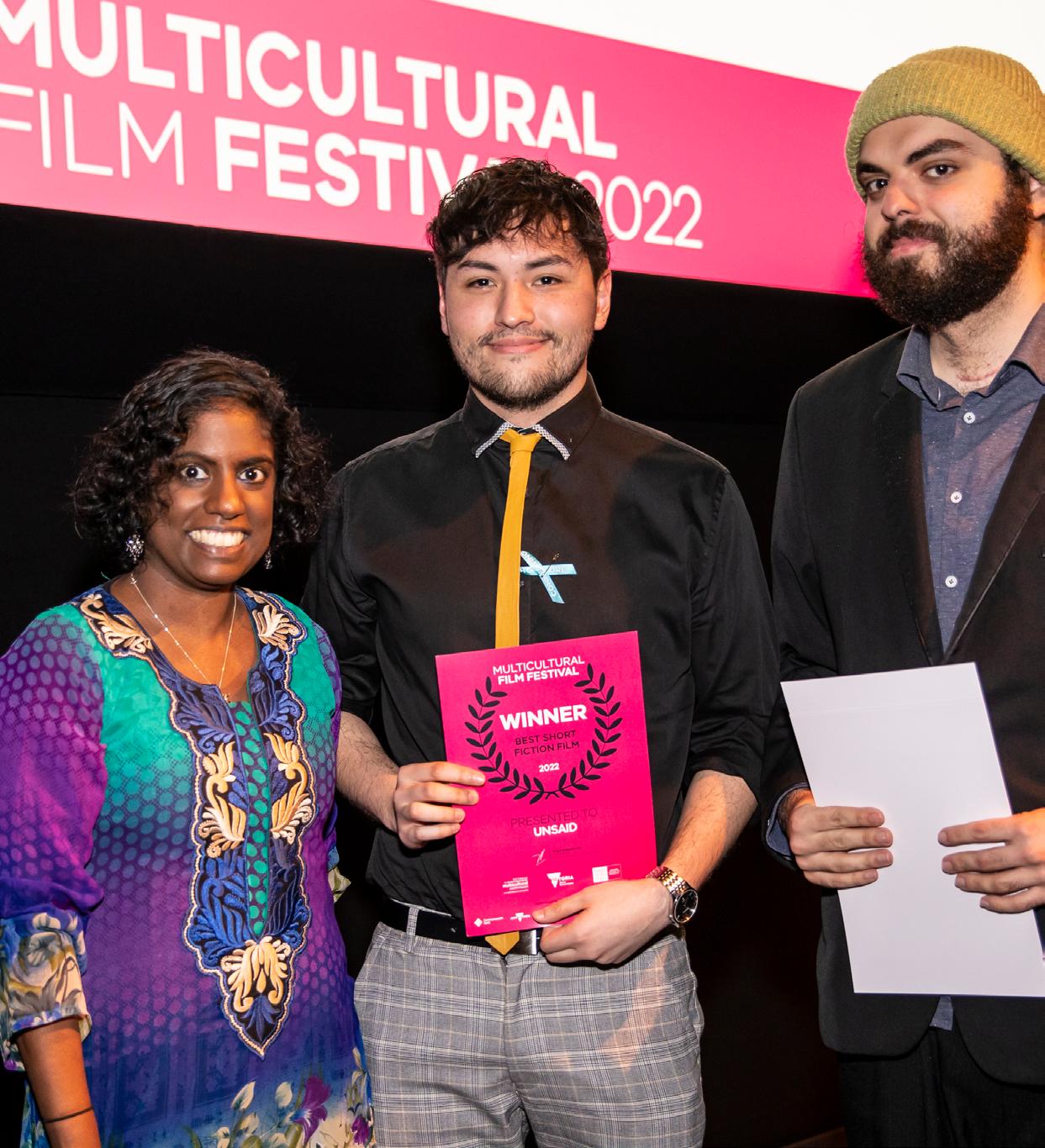
Follow us on or check out our website for details.

Chenée Marrapodi explains how the tale of Pinocchio colored her childhood and sparked her imagination and love of stories.
When I think of Italian fables, my mind immediately goes to Pinocchio. I was always mesmerized by the idea of a little wooden puppet coming to life, often wishing the same would happen to one of my dolls…minus all the mischief!
Like many, I grew up on a Disney diet, and it wasn’t until I was studying Italian at school that I discovered the Italian origins of Pinocchio. Carlo Collodi’s novel Le Avventure di Pinocchio is darker than the cartoons it inspired, but the messages are similar. As kids, we were always told that lying would make our noses grow long like Pinocchio’s, and while we were always skeptical, we weren’t game enough to risk it! I do not doubt parents will be issuing the same warning for generations. I just hope my son is as gullible as I was!

CHENÉE MARRAPODI
Author of One Wrong Turn and television producer
One of Elena Perroni’s favorite stories in Italian folklore is that of the Fountain of Arethusa. She tells us more about the origin myth explaining this miraculous freshwater spring in Siracusa, Sicily.
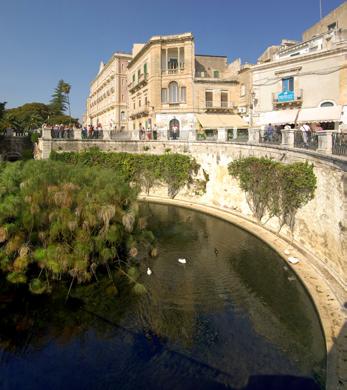
Arethusa, known for her youthful spirit and beauty, one day decided to bathe in the cool waters of Ortigia. Alpheus, the deity of the water, was struck by her beauty and chased after her. With the help of Artemis and Oceano, the water currents joined so Arethusa and Alphaeus could meet. They ask Artemis to help seal their love and destiny and dig a cave under the fresh spring to ensure the waters of Arethusa and Alpheus’ love would flow for eternity.
I always thought this story was incredibly romantic and added to Syracuse’s alluring nature and beauty.
ELENA PERRONI
Soprano and lead in West Australian Opera’s La bohéme


34 VIVA VOCE THE VOICES OF OUR READERS
Segmento Issue XXXII • Sep - Nov 2023
To coincide with our celebrations around folklore, fables, myths, and legends, we asked some notable Segmento readers which Italian stories strongly influenced them.
Who doesn’t have childhood memories of being enchanted by mysterious knickknacks in our grandparents’ homes?
Felice Arena shares how a lifelong fascination with wolves was born from encountering Rome’s foundation myth at his nonna’s house.
I remember being fascinated by a bronze figurine of the she-wolf suckling Romulus and Remus on a glass bureau at my Nonna’s house. It gave me my first impression of wolves. I thought of them as strong, caring, and protective. The wolves in my storybooks blew houses down and ate grandmas. But I always remembered the mother wolf and her boys.
Perhaps the sculpture, familiar to all Italians, is behind my lifelong affection for wolves which also happen to be the national animal of Italy. Strangely enough, I recently discovered that the Arena family crest has a red wolf howling to the heavens on a green hill. Could it be fate?

FELICE ARENA
Best-selling children’s author of Pasta and the Specky Magee series

Towns and villages across Italy demonstrate local pride and community spirit in the form of lavish medieval reenactments to celebrate religious holidays and commemorate historical events. Francesca Gnagnarella shares a memory of getting stuck in at her town festival.
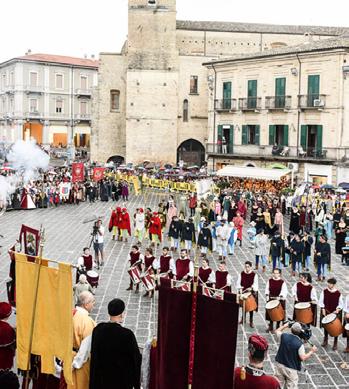
The figure of Il Mastrogiurato is my fondest memory of folklore stories from Lanciano in my hometown in Abruzzo. One of the most beautiful and popular festivals in Abruzzo and is a historical reenactment of what the town looked like in Medieval times during the town festivities in September. It is said that the Il Mastrogiurato figure was established by Charles II of Anjou in 1304 to represent justice during town fairs.
I fondly remember this historical event because one year, I was asked to act as the lady of honor at the parade when my father was elected Mastrogiurato. It was truly a unique and memorable experience.

VivaVoce
35
FRANCESCA GNAGNARELLA Artist
Segmento Issue XXXII • Sep - Nov 2023
 Earrings by Chiara Jewellery
Necklace by Bini Gallery
Bini Jewellery is available from Gertie Gallery, 247 Gertrude Street, Fitzroy VIC 3065, Australia.
bini_gallery
Earrings by Chiara Jewellery
Necklace by Bini Gallery
Bini Jewellery is available from Gertie Gallery, 247 Gertrude Street, Fitzroy VIC 3065, Australia.
bini_gallery
A SIREN’S SONG IN FASHION AND DESIGN
MYTH AND FOLKLORE PROVE IRRESISTIBLE TO ITALIAN DESIGNERS
by Christopher Fotheringham
Italy was one of the great centers of the classical world. Epic tales of wrathful deities and fantastical creatures permeate the nation’s culture in sometimes uexpected ways. Reaching its apogee in the Renaissance, when classical forms were rediscovered in an explosion of artistic endeavour, artworks paying homage to mythological characters have adorned the nation’s piazzas, museums, and palaces for centuries. And then there are the entrenched dogmas, local superstitions and folk tales that have also animated Italian village life for centuries.“Italian folklore is deeply rooted in the country’s history and traditions. It reflects the Italian people’s collective experiences, beliefs, and values throughout generations,” explain Bangalow-based business owners Cinzia and Adele from Studio Medea. “As a result, these tales have become an integral part of the cultural identity, fostering a strong sense of pride and connection among Italians.”
This strong sense of pride is what kindled the passion in these two Italianborn creatives to establish, Studio Medea, an online boutique store that stocks an extensive range of Sicilian ceramics including teste di moro and pigne , as well as an eclectic range of homeware.
The idea for the store came from “an unquenchable thirst to capture the essence
 Adele and Cinzia from Studio Medea, Olivia Cummings from Cleopatra’s Bling, and Gabriella Picone from Idda Studio talk about the renewed interest in mythology and the timeless stories that inspire their work.
Adele and Cinzia from Studio Medea, Olivia Cummings from Cleopatra’s Bling, and Gabriella Picone from Idda Studio talk about the renewed interest in mythology and the timeless stories that inspire their work.
37 FASHION & DESIGN Segmento Issue XXXII • Sep - Nov 2023
Studio Medea
of Italian history and artistic beauty.”
They believe the interconnectedness of the vast tapestry of stories has sustained their store’s popularity. “The diversity of these stories adds depth to the overall Italian folklore and fosters a sense of pride and identity in different regions, which often evokes feelings of nostalgia and comfort, reminding people of their childhood, family gatherings, and simple times. This
emotional connection contributes to the enduring popularity of these stories.”
Idda Studio’s Gabriella Picone says that her early memories of Sicilian folkloric iconography and the nostalgia associated with such imagery heavily influenced the creative direction of Idda. “Growing up in Sicily, I was always told superstitious tales, traditional stories that have come to shape the contemporary culture of Sicily. Even the name of the Aeolian islands is inspired by the god of wind, Aeolus, whose wind-blowing face you will find all throughout Lipari, whether it’s on the sign of a pastry shop, on vintage tiles on the streets or on the logos of boats. Even at a young age, I remember the impact these stories had on my upbringing, and when starting Idda Studio it came naturally to draw on these personal references.”
Picone is looking to her roots for her next collection, Le Sirene , which pays tribute to the Sirens from her father’s native, Lipari, in Sicily.
My next collection is inspired by the Sirens, female-like mythological creatures who are most famously referenced in The Odyssey. Local tradition holds that these islands were the ones mentioned by Homer, where the Sirens used their magical songs to lure Odysseus into danger. Although Odysseus was able to escape by having his crew plug their ears with beeswax and tie him to the ship, the symbolism of the Sirens as strong tempting female figures is remembered in history. The next Idda Studio collection,
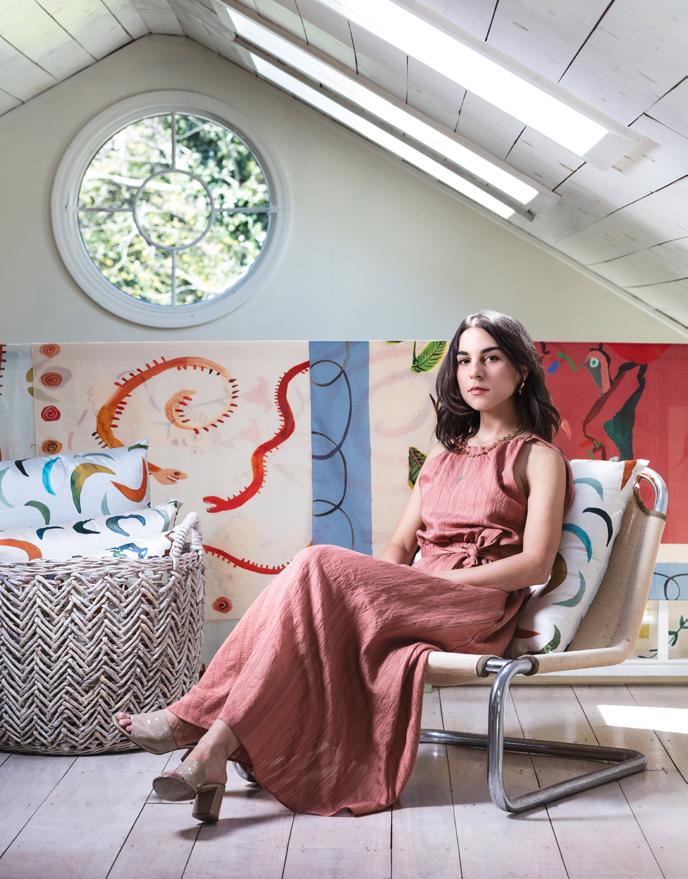
38 Segmento Issue XXXII • Sep - Nov 2023
FASHION & DESIGN
Gabriella Picone. Photo Joe Kramm
Le Sirene , features hand-painted napkins and tablecloths with vibrant Siren figures. The pieces are limited edition and produced in Italy, and we are excited to launch them soon.
Melbourne-based jewelry designer and director of Cleopatra’s Bling, Olivia Cummings, is constantly interweaving storytelling with her jewelry design. Several collections pay tribute to Italian myths and religious figures. “We love to tell stories. Capitalistic societies have appropriated symbolism, and there’s a lack of context in storytelling. We strive to honor what it means and give people more than just what is trending on social media.”
Cummings, who was previously based in Naples, was immersed in the city’s stories of Sirens, San Gennaro, and the feminielli Her designs paid homage to some of teh city’s most beloved motifs. “Living in Naples blew my mind. It was so chaotic and folkloric and so embedded in history.”
Cummings believes the last few years have seen a shift in consumerism and a yearning for more meaningful items with a story behind them. “I think people feel disenfranchised globally, so they are turning to brands that have something to say and sort of represent untold stories of these cultures. People are looking for depth, and it was so much easier to make money ten years ago, but there was a lot more mindless spending and consumerism. Now people want a story and something unique to hold onto forever. It’s pushing brands to question what they are doing.”
The allure of myth and legend has been pervasive. Small scale Italian designers
are not the only ones taking inspiration from their mythic heritage. The Versace logo is embellished with Medusa, Dolce & Gabbana celebrated Sicilian folklore in its alta moda shows and in 2018 the Met Gala held the exhibition Heavenly Bodies: Fashion and the Catholic Imagination . With Sirens and nymphs emerging from the depths of the sea and their enchanted woods to conquer the catwalk and the showroom, it appears the resurgence in classical myths and fables in the worlds of fashion and design will not abate anytime soon.

39 Segmento Issue XXXII • Sep - Nov 2023 FASHION & DESIGN
Olivia Cummings from Cleopatra’s Bling
STORY OF A POSTMODERN ITALIAN ARCHITECT CELEBRATING THE WORK AND THE LIFE OF PAOLO PORTOGHESI
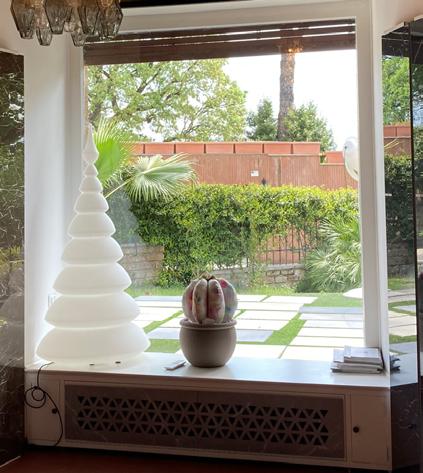 by Elena Rajani | Photography by Elena Rajani
by Elena Rajani | Photography by Elena Rajani
On 30 May 2023, the world bade farewell to Paolo Portoghesi, a visionary architect who died at the age of 91 in his home in Calcata, Lazio. He left an indelible mark on the world of architecture and architectural history.
between 1959 and 1961, according to Portoghesi’s architectural manifesto, this unique residence embodied the innovative zeitgeist of its time, igniting a spirited debate within the design community with articles appearing in architectural digests all over the world and even in the New York Times
The house is a harmonious fusion of curves and overhangs, taking inspiration from Borromini’s style and the surrounding landscape. The use of tufa stone, a material sourced from a local quarry, connects the building with its natural setting, blending seamlessly with the hilly terrain. Casa Baldi stands as a testament to Portoghesi’s philosophy of incorporating elements of nature, history, and tradition into his designs.
My family bought the house from the cinematographer Gian Vittorio Baldi in the 1970s. I was privileged to spend the
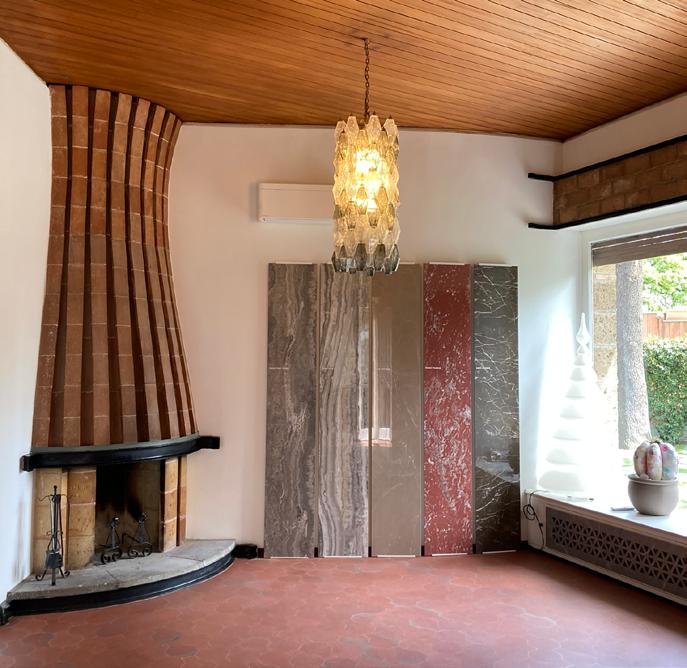
Born in Rome in 1931, Paolo
Portoghesi grew up amid the Italian capital’s architectural marvels, sparking in the young Portoghesi a lifelong passion for architecture that set him on a path to pioneer Italian postmodern architecture. Portoghesi’s career was characterized by his exploration of the Italian Baroque, which he sought to revive in an innovative, modern style with influences from modern architects like Victor Horta and Frank Lloyd Wright.
One of Portoghesi’s most celebrated architectural masterpieces is Casa Baldi, a residential gem located in Rome. Built
40 Segmento Issue XXXII • Sep - Nov 2023
Interior of Casa Baldi showing off its distinct geometric pink terracotta tiles
FASHION & DESIGN
A view of the garden from Casa Baldi
majority of my childhood there, and its impact on my work is inestimable. I admired the detailed metalwork and how it gracefully merged with the overall design. The intricate use of bricks formed a connection with the interior elements, such as the vault at the entrance or the red brick fireplace and the exterior finishes. The terrace boasted a vista of the Tiber, the course of which seamlessly harmonizes with the exterior walls’ meandering curves. This marvelous design experiment epitomizes the connection between architecture and nature that was so innovative at the time the house was built. The garden surrounding the house is particularly captivating, providing everchanging and breathtaking views that could be enjoyed from the rooms in the house. A large window in the main living space allows natural light to flood the

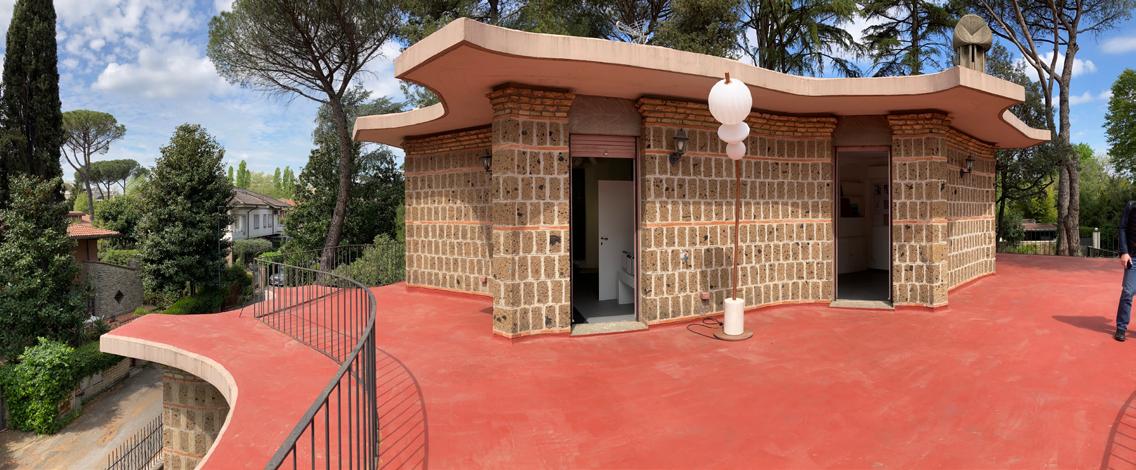
41 FASHION & DESIGN Segmento Issue XXXII • Sep - Nov 2023
The rooftop terrace of Casa Baldi with commanding views of Rome
Casa Baldi’s organic curves were built using rough tufa stone
interior, creating a warm and welcoming atmosphere amplified by a beautiful fireplace.
In 1966, Portoghesi founded Controspazio, an architectural journal of which he remained editor until 1983. He subsequently spent six years editing the influential largerformat magazine Eupalino, through which he was able to communicate his ideas to a wider audience.
As director of the inaugural Venice Architecture Biennale in 1980, Portoghesi devised a project called The Presence of the Past. He brought together around twenty international architects to design facades for the 70-meter-long Strada Novissima inside the Corderie of the Arsenale. With an attendance of over 2,000 visitors a day, the exhibition was an enormous success and went on to be shown in Paris and San Francisco.
As a result, Portoghesi was invited to curate the second International Architecture Exhibition of the Venice Biennale, titled Architecture in Islamic Countries , which in his own words, represented “a spirit of cultural dialogue.” In 1984 Portoghesi completed arguably the most important work of his career: the Islamic Cultural Centre of Italy and Grand Mosque of Rome. It remains the largest mosque in Europe by area at an impressive 30,000 m2 and is able to accommodate more than 12,000 worshippers.
Ever the visionary, he was responsible for the 2019 renovation of Casa Baldi after it was bought from my family. His final work enshrined his legacy and brought his career full circle as the house now serves as a creative center for Casalgrande Padana, open to the public as a showroom and events space.
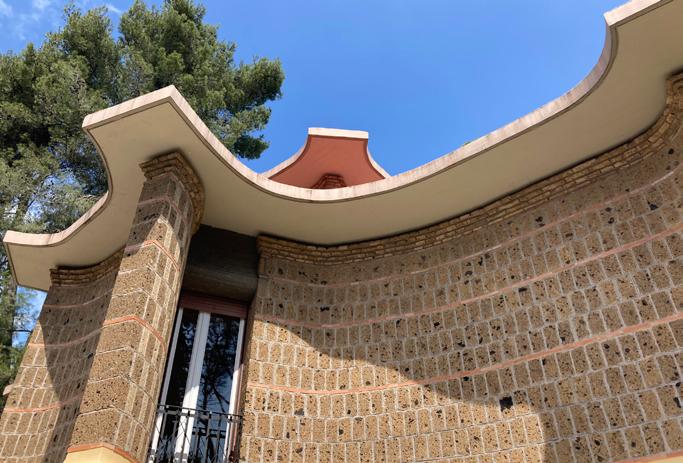
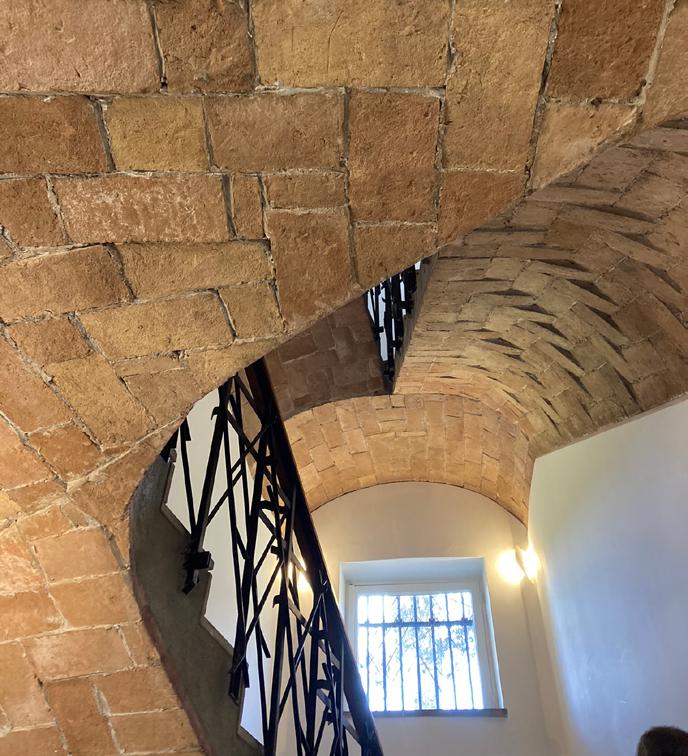
42 Segmento Issue XXXII • Sep - Nov 2023 FASHION & DESIGN
The red brick vaulted staircase of Casa Baldi and its distinctive metalwork railings
Celebrating light and shadows through clever design

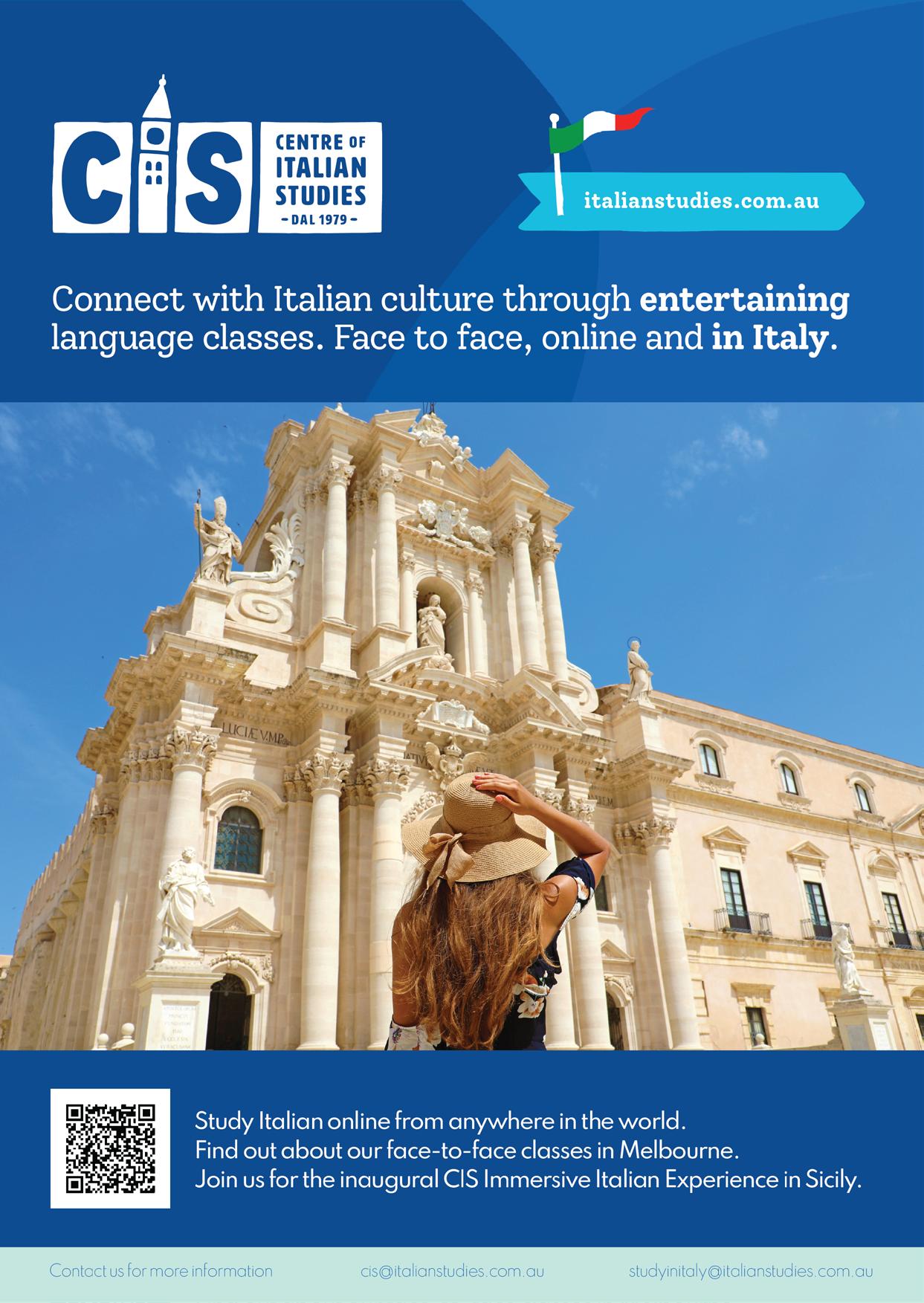
A LEISURELY TRIP ALONG THE VIA AURELIA TAKING IN THE TUSCAN AND LIGURIAN COAST BY CAR
by Catherine Cervasio | Photography by Catherine Cervasio
It was the trip I had long planned: to travel around Italy by car, stopping in as many towns as possible. Between raising two children and building a business, it had never been possible to take this dream trip until now.
Rome was a natural starting point. I arrived late in the day; the sun had already set, and the twinkling yellow lights were beginning to glow. In town for a mere 24 hours, I was keen to squeeze in as much as possible. I dropped my luggage at the hotel and walked, stumbling across a little trattoria around the corner from where I was staying. It was 10 p.m., and a simple plate of pasta and a glass of chianti never tasted so good. Still adjusting to the time zones, I awoke to the birds chirping at 5 a.m. the next morning. Still dark outside, I could barely wait for dawn to break as I watched the few stars still visible dimly twinkle from my window. The moon slowly disappeared, and the sky turned from a deep navy to royal blue, providing a magnificent canvas for the soft hue of golden lights on the church I could see in the distance.
Still not quite sure where exactly my hotel was situated, knowing only that it was in the “heart” of Rome. The location turned out to be a dream choice. I set off around 6.30 a.m. and walked down the cobblestone lane. Within minutes, the ruins of the majestic Colosseum came into view. The beauty of wandering around a city full of archaeological splendor before dawn is that you can get up close and personal before the crowds of tourists descend on the city. I’ve seen the sights of Rome on a previous visit, but never like this. After a delicious breakfast overlooking the Colosseum at my hotel’s partner property, Palazzo Manfredi (which boasts the Michelin-starred restaurant, Aroma),
I wandered around the eternal city before heading off to begin my adventures. With the sunshine and a gentle breeze as my travel companions, I started my journey following one of Ancient Rome’s most important highways, the coastal Via Aurelia, that connects Pisa to Rome. The road snaked northwards
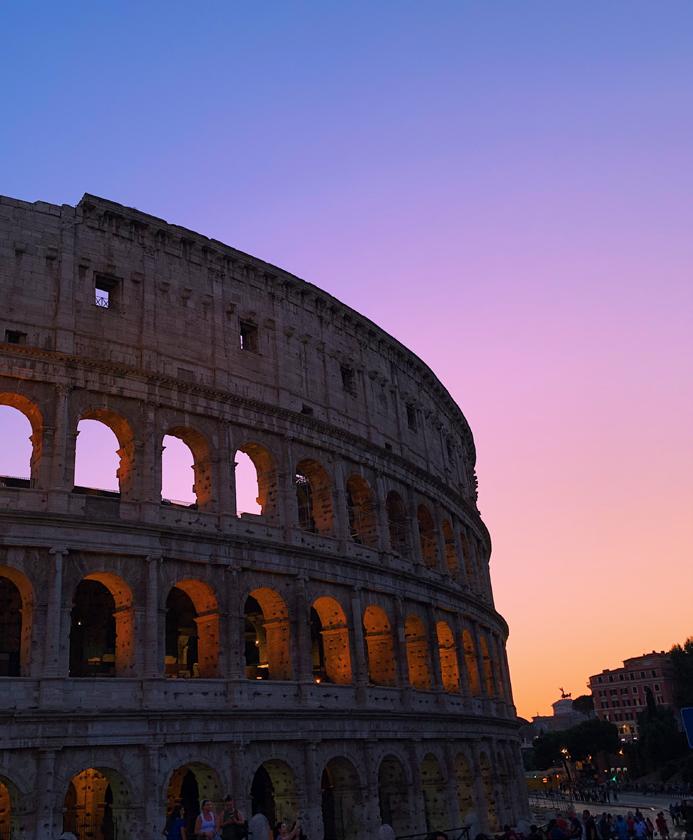
45 Segmento Issue XXXII • Sep - Nov 2023 TOURISM & PLACES
Rome at dawn
through a series of tunnels carved out of mountainous rock, and finally, the sparkling Mediterranean came into view. Enjoying the ever-changing landscape, I slowly made my way through the everchanging landscapes of the Tuscan coast before crossing into Liguria.
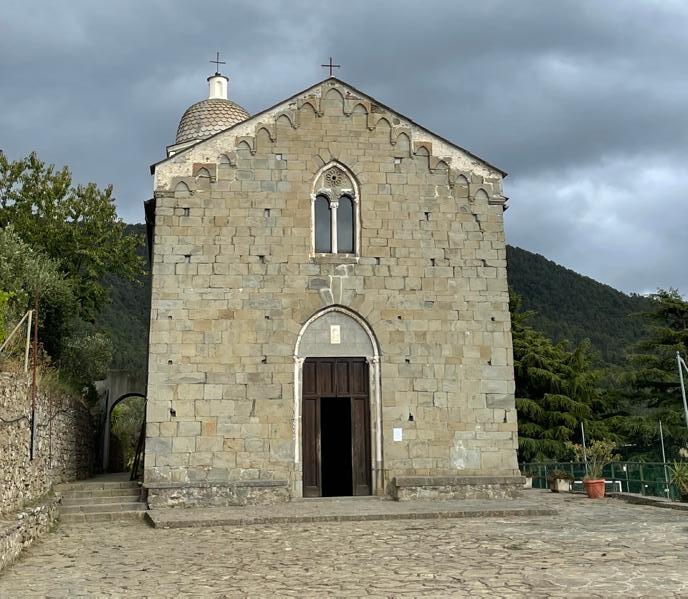
I journey through more quaint villages and seaside towns until I see the sign for Santa Margherita and the Imperiale Palace Hotel set high up on the hill. Complete with Bulgari amenities and sweeping views across the sea from the dining areas, this hotel is a perfect alternative to being in the center of Portofino. The leisurely 20-minute walk at dusk along the promenade is worth every step. I pass the ferry terminal, where visitors can take a short trip to Le Cinque Terre or Portofino. A statue of the city’s patron saint, Santa
Margherita–with her arms spread wide–stands at the edge of the water looking out to sea. She keeps a watchful eye over the local fishermen here. Dinner was at Giacomo Bistro, a sister restaurant to the Milan institution by the same name, overlooking the setting sun across the water. With a focus on fresh, local seafood, the red prawn tartare with mandarin sorbet and tortelli with lime and bottarga were heavenly.
After a good night’s sleep, the next morning, I headed further inland toward my final destination of this trip, the historical town of Lucca, beloved by music and art lovers. Intact Renaissance-era walls and ramparts surround the charming historical center of Lucca. The impressive fortifications are topped with a tree-lined pedestrianized road that can be walked or cycled to enjoy

46 Segmento Issue XXXII • Sep - Nov 2023 TOURISM & PLACES
Piazza dell'Anfiteatro, Lucca, at dusk
Stone chapel in the Cinque Terre
views of the city and the blue silhouette of the Alpe Apuane in the distance–perfect for an evening passeggiata. Among Lucca’s many charming piazzas is Piazza Puccini, adorned with a seated bronze statue of the Lucchese composer in front of his historical home and an oblong piazza built over the Roman amphitheater. Lucca is home to several stunning Romanesque churches, including San Martino, which houses the Volto Santo, a wood carving of Christ from Palestine that dates to late antiquity and was brought to Lucca in the 8th century, San Frediano with its beautiful golden mosaic façade, and San Michele in Foro, a cacophony of pink, white and green marble columns and sculptures in the main piazza of the city built over the site of the Roman forum.
I stayed in Palazzo Tucci–a 17th-century palace and once family home of the Tucci

family. Still owned by a descendant of the original Tucci residents, Alessandro greeted me with a friendly smile, providing a brief overview of the building’s regal history. In the hallway hung a painting depicting an impressive family tree dating back to the 13th century. My room–the former ballroom measured an impressive 75 m2. Breakfast was a traditional Italian spread of cold meats, cheeses, and pastries, set in a large room featuring magnificent paintings and frescoes. After exploring some of the beautiful villages around Lucca, it was time to head to Florence, catch the train to Rome, and head home. As the trip of my dreams ended, I took many memories home and made plans to return and continue my journey where I left off.
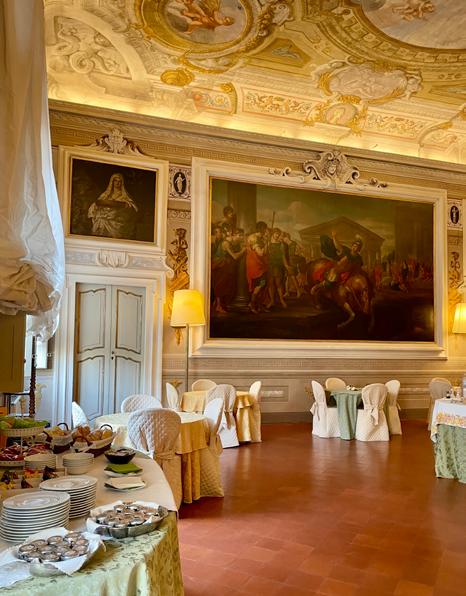
47 Segmento Issue XXXII • Sep - Nov 2023 TOURISM & PLACES
Turndown at Imperiale Palace Hotel Santa Margherita
Palazzo Tucci, Lucca: Dining room at breakfast


48 Segmento Issue XXXII • Sep - Nov 2023
MYTHICAL CREATURES, ANGRY GODDESSES, AND UNDYING LOVERS ITALY AS A LAND OF ANCIENT MYTHS AND LEGENDS
by Isabella Vagnoni
With its deep ancient history, it is no surprise that Italy is home to many landmarks with legendary origins. Here are four fantastical places to spark the imagination.
VERSACE’S MEDUSA LOGO AND ITS TIES TO CALABRIA

If Italy is shaped like a boot, Calabria is its toe–the most southern point of the mainland. Conquered by the ancient Greeks, Calabria was once part of Magna Graecia or Greater Greece. Greek ruins are scattered the region and stand as silent reminders to a mythical age.
Calabrian-born Gianni Versace changed his world-famous fashion brand’s logo in 1993 to reflect his roots. He created the iconic Medusa head encircled with a border featuring an unmistakably Greek geometric pattern. His logo was inspired by a mosaic of the Medusa on the floor of the ruins of a Roman domus in Reggio Calabria, where he used to play with his siblings as a child.
In one variation of the myth, Medusa was born as one of three Gorgon sisters. Medusa was the only sister who was not immortal. Unlike her sisters, she was blessed with great beauty, a striking face, and her best feature–luscious hair. Her beauty was so great that the god of the sea, Poseidon, could not contain his lust and forced himself on Medusa in the Temple of Athena.
Enraged that her holy temple had been defiled, Athena punished Medusa (not Poseidon, of course!) by turning her hair into a coil of snakes and disfiguring her beautiful face. Any man who looked upon Medusa would turn to stone.
THE LEGEND OF THE MARMORE FALLS IN UMBRIA

The Marmore Falls (Cascata delle Marmore) is a short drive from the city of Terni in Umbria, Italy’s “green heart.” It is the tallest man-made waterfall in the world, at 541 feet (165 meters). Amazingly the falls were built during Roman times. However, there is an alternative story to how the falls came to be.
Legend has it that a nymph called Nera fell in love with an attractive shepherd named Velino. Their love angered the goddess Juno, and in a jealous rage transformed the nymph into the river. A love-sick Velino jumped from the Marmore cliff into the river to be with his precious Nera. The falls were created as a lasting memory of their undying love. Nowadays, the falls are a popular tourist destination, with multiple walking routes for visitors to explore.
49 Segmento Issue XXXII • Sep - Nov 2023
TOURISM & PLACES
THE MOUTH OF TRUTH IN ROME
The Eternal City is home to the Palatine Hill, the Roman Forum, the Colosseum, and much more. Another well-known monument is Rome’s Mouth of Truth (la Bocca della Veritá), which became internationally famous after appearing in a pivotal scene in Roman Holiday, a 1953 film starring Gregory Peck and Audrey Hepburn. The Mouth of Truth is carved from marble and honors Neptune, the god of the sea. The 1.75-meter diameter mask portrays a bearded male with holes for his eyes, nose, and mouth.
Legend has it that in the Middle Ages, liars who placed their hand inside the mouth would have it bitten off. Medieval Romans saw the sculpture as a lie detector for those who committed adultery and perjury. Today it is common to see tourists lining up to be photographed with their hands inside the Mouth of Truth.
MOOR HEADS IN TAORMINA
Taormina is a charming Sicilian coastal town. The sea-side views, ancient Greek ruins, and its status as a historical melting pot make it a popular tourist destination.
Moor heads decorate much of Taormina, and date back to 1100AD. The heads are associated with a tragic love story of the Middle Ages, told during the domination of the Moors in Sicily. They tell the story of the impossible love between a Sicilian girl of noble stock and a young Muslim.
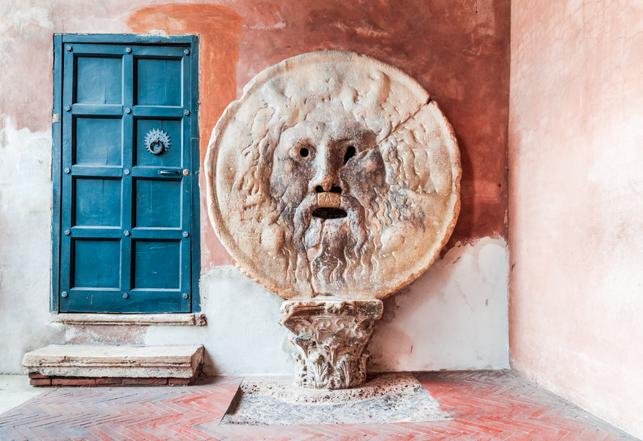
When the young woman’s family discovered their tryst, her parents beheaded the couple, turned their heads into vases and hung them on the balcony as punishment.
Today, artisanal Moor heads are crafted in memory of the young lovers murdered for their forbidden love. Moor heads are commonly used to decorate the balconies of Sicilian towns, in particular, the areas of Caltagirone, and Taormina.

50 Segmento Issue XXXII • Sep - Nov 2023
TOURISM & PLACES
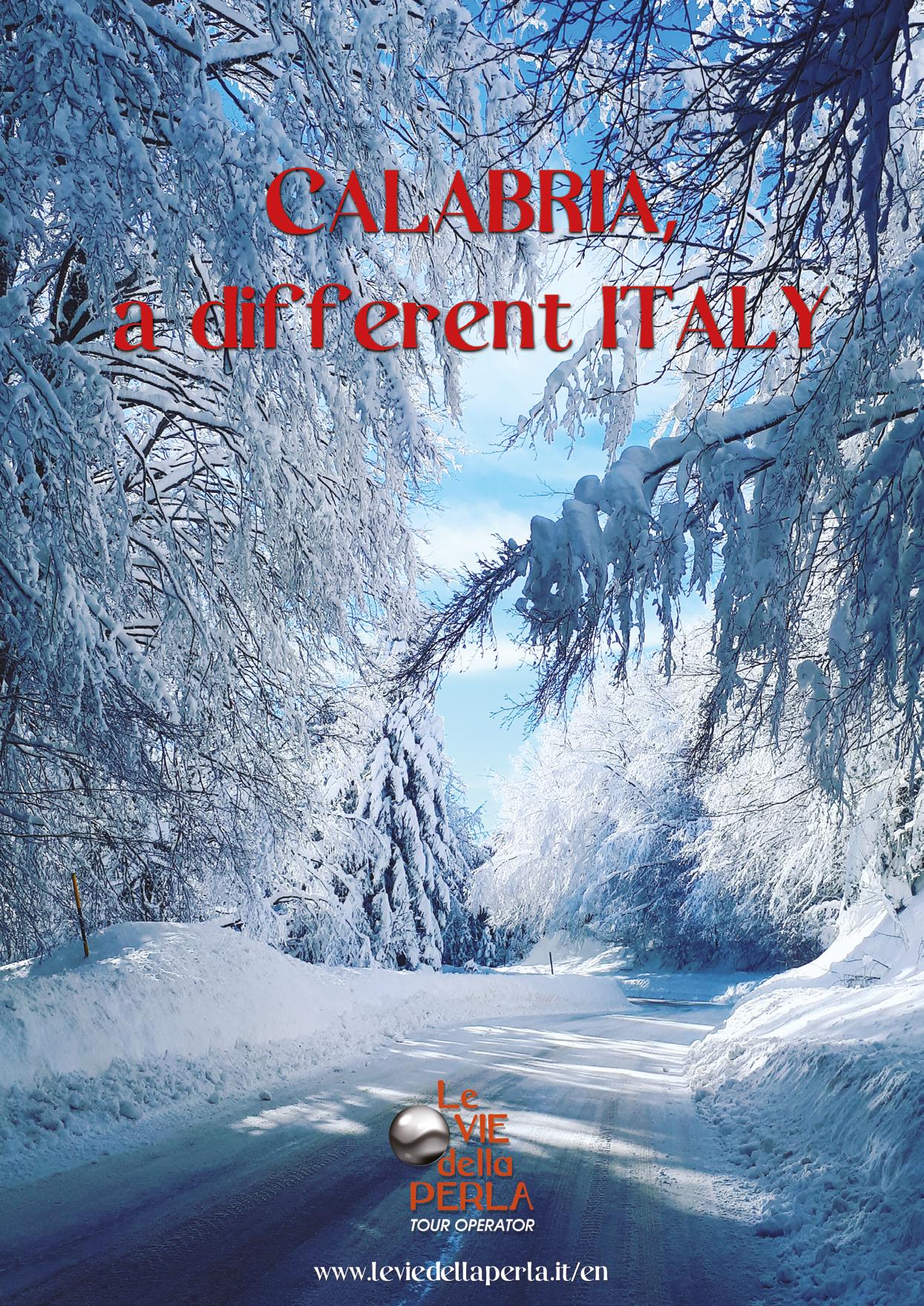
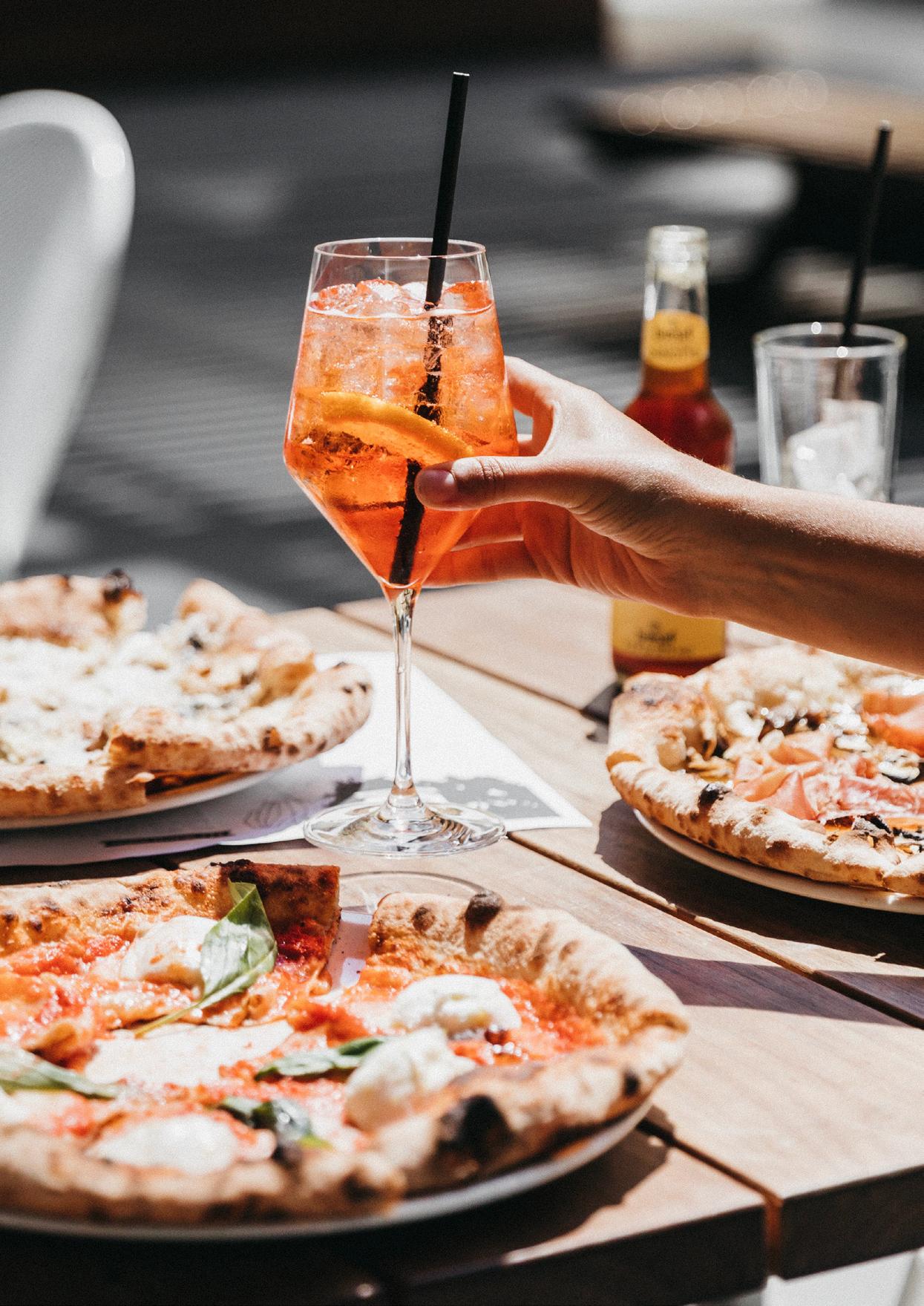
FROM PANKO TO PAN GRATTATO
EMIKO DAVIES LOOKS AT THE PARALLELS BETWEEN ITALIAN AND JAPANESE CUISINE WITH HER LATEST PROJECT
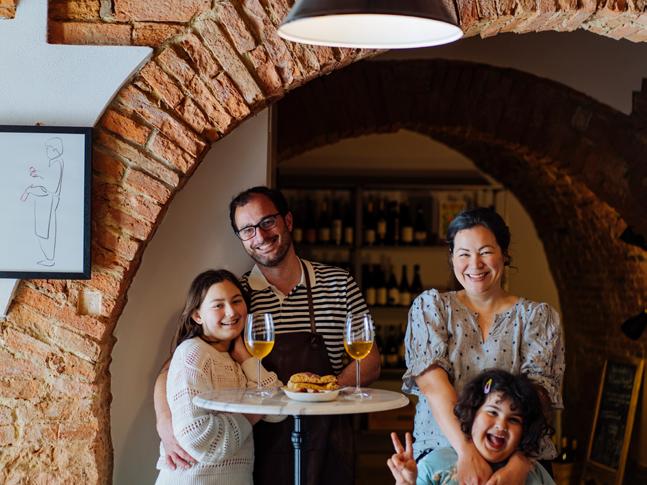 by Daniele Foti-Cuzzola | Images provided by Emiko Davies
by Daniele Foti-Cuzzola | Images provided by Emiko Davies
“There wasn’t even panko!” When food writer Emiko Davies moved to Florence, she was hard-pressed to find even the simplest Japanese ingredients to make her go-to comfort foods. She made do with locally available ingredients and has included her resourceful fusion recipes in her latest book Gohan.
“I knew very early on what it was like to experience a new place almost purely through food,” explains Japanese-Australian cookbook author Emiko Davies. The Tuscany-based author traveled extensively from a young age with her Japanese mother and Australian father, living in China and the United States and regularly visiting her maternal grandparents in Japan. However, it was Florence that captured the young art student’s heart at 21, and the city has remained her home ever since. “You can experience so much just by eating your way through a city, an area, or a country, and I’ve always appreciated that. So coming to Florence, even when I was a 21-year-old art student, I knew I could hop on a train and go to Lucca and be in a completely different place with a different atmosphere in an area that has its own special dishes that you can’t find in Florence–I just thought that was wonderful and amazing.”
Since moving to Florence, Davies has established herself as a sought-after voice in Italian cuisine. In addition to her cookbooks Florentine: The Cuisine of Florence, Tortellini at Midnight, and Acquacotta, Davies has written for Corriere della Sera , Gourmet Traveller, Conde Nast Traveller, and The Canberra Times . She regularly runs cooking classes at her recently opened Enoteca Marilu, which is named after her and her husband Marco’s two daughters, Mariù and Luna–but it was her love for art, not food, that led her to find her home in the Tuscan capital.
Davies’ first taste of Florence was during
a whirlwind European school holiday at 16, but despite only spending a day in each city, the holiday left quite a mark on the teenager. “It definitely left an impression because, since that point, my favorite art history period was the Renaissance,” explains Davies. “Florence is obviously the place to be for that, but it was an impulse decision to come here. I was so desperate to get out of the United States. I didn’t want to live there, and I had a teacher who suggested Florence, and so I came on a whim, and it turned out to be the most amazing experience.”
After completing her studies and meeting her husband Marco, Davies settled in Florence and began working in art restoration before starting a food blog. However, a photo restoration project
53
CUISINE & FOOD
Segmento Issue XXXII • Sep - Nov 2023
Emiko Davies with husband, Marco and daughters Mariù and Luna at their recently opened, Enoteca Marilu in Tuscany
inspired her to trace her husband’s heritage and write her much-loved book, Tortellini at Midnight.
My husband’s cousin found some of his mother’s photos in the attic of the family home, and he had no idea who any of the people in the photos were. He asked if I wanted them as they needed to be restored, and I thought I could use them as practice and give them back to him. It was a lovely project, but I was like, “Wow! It only takes one generation for you to have a box full of photos and not know who anybody is.” So I started talking to my mother-in-law, who has a chest of drawers full of photos, and we started going through them, and that was the catalyst for Tortellini at Midnight
Working on that project inspired Davies’ latest book Gohan , which is a tribute to her own family. “I had spent so much time researching Marco’s family and his roots that I also wanted to do this [book] for my kids, so they can understand their roots and where they come from. It’s not as historical as Tortellini at Midnight , but it’s looking back at my own nostalgia for food.”

“Maybe something in Italian cuisine felt familiar to me but not initially in an obvious way–the ingredients are so different–but I can think of dishes that are somewhat the same–like this is the Japanese version of an Italian dish,” says the food author in whose home Japanese and Italian cuisine are the two major staples. Davies puts the similarities between Japanese and Italian cuisine down to what the countries share in terms of geography:
They are both volcanic and mountainous, and I think volcanos and mountains in Japan characterize
many things about the culture, particularly the food. I mean, think of a place like Sicily, the really fertile volcanic soil, the contrast of the mountains, volcano, and sea, and the kind of cuisine that comes about with a place that has a lot of those things. Japan and Italy, to me, both have those parallels, amazing fertile soil and incredible natural produce.
Italians have notoriously conservative palates, but things are changing as Italy becomes more multicultural and people travel more.
Young Tuscans are now moving around for work or have gone overseas to travel or for jobs. Some come back and open a restaurant in Florence influenced by new places that they’ve been and seen, and these restaurants they have opened are really interesting, and I think that’s where Tuscan cuisine is going, or at least I hope so. They are appreciating and looking back at their own food traditions. Still, they are also using the knowledge they have gained from traveling, going to other places, and incorporating flavors.
Over 20 years have passed since Davies arrived in Florence, and in that time, she has seen the city’s food scene open up to foreign influences and develop a more multicultural food scene with immigrant chefs and recently returned Tuscans having opened up eateries catering to their communities, tourists, and increasingly adventurous Italians.
54
CUISINE & FOOD
Segmento Issue XXXII • Sep - Nov 2023
Emiko Davies is paying tribute to her Japanese heritage with her latest cookbook, Gohan: Everyday Cooking: Memories and Stories of my Family’s Kitchen
STEFANO DE PIERI’S RECIPE FOR SUCCESS
by Catherine Cervasio
Growing up in an Italian “rural paradise,” Stefano De Pieri developed a lifelong connection with the land and the food it provided, an experience he would bring to Australia, becoming one of the country’s most recognizable advocates for good food and wine.

One of the first celebrity chefs, best known for his love of Mildura and his programs A Gondola on the Murray and Australia’s Food Bowl, Stefano De Pieri has highlighted the importance of sourcing local fresh ingredients and minimizing food waste. He champions produce from the Murray-Darling Basin in his namesake restaurant, which has been housed in the Mildura Grand Hotel’s former wine cellar for over thirty years. He is a celebrated cook, restaurateur, and author, and in recognition of outstanding community service and achievement, he has been made a member of the Order of Australia.
De Pieri’s early memories include daily life around the family farm in Veneto, which he says was “destroyed” by the arrival of a brick factory. “The factory literally incinerated our vineyard with its thick plumes of diesel smoke which poured from the building roof,” recalls De Pieri.
Everything the De Pieri family cooked was grown by them. The family’s three cows generated enough manure for the farm. Asparagus, radicchio of many kinds, the full range of summer veggies, fruits including abundant persimmons, herbs, garlic, borlotti beans, and much more were all part of the De Pieri’s homegrown diet. They also raised silkworms from egg to cocoon and had a large variety of animals. According to De Pieri, poultry, pigs, and cows for milk and fieldwork were essentials on the family farm. While the farm was extremely small, it adequately supported the family’s six children.
“I foraged for mushrooms and tender poppy plants–better than spinach! We
farmed lots of ducks, chickens, roosters, turkeys, and so on. Occasionally we ate river fish–hence my eternal fascination for Murray cod,” says De Piero.
On arrival in Australia in 1974, De Pieri remembers he was always hungry. He recounts his experiences getting used to the food in Australia and making do with what was available on the market:
I was young and walked everywhere. I hated and still hate commercial pies. In the not-so-remote past, we
55 Segmento Issue XXXII • Sep - Nov 2023
CUISINE & FOOD
Stefano De Pieri
did not have food simply on tap like we do now, and money was scarce. I was not quarreling with what was on offer as I was sufficiently capable of improvising. The thing I lamented most was the lack of good extra virgin olive oil, but for the most part, you could find food if you wanted to. There was even good dark bread from the Atlantic Bakery made in the style of Eastern Europe. It was available from milk bars and was inexpensive. Perhaps there was not a lot of variety, but Queen Victoria Market had more than enough in those days, including Asian vegetables, which were totally new to me. There was quite a bit of seafood around and a small selection of fish. It struck me that there was everything we had in the Mediterranean–think about it, we have it all here, but all you got served was from the same range, never a cacciucco (fish stew) or a fish risotto, for example. However, there was an abundance of offal, which has since gone into terminal decline. It is becoming more difficult to find brains, for instance. When the old butchers retire, it will be hard to find cold meats such as cotechino –a traditional pork sausage often served on festive occasions.
De Pieri moved to the town of Mildura–the home of his in-laws, after marrying in 1991. “Mildura was to me like the world I had left behind–small farms, local stories, community, and bartering. Fish from the river include yabbies, plenty of fruit, veggies, and lamb. There were goats in large numbers. There were brandy and sherry producers. There was simplicity.
I made the most of it, and I served an unusual dining style in that there was no menu. This has been a risky way to run the restaurant and not an easy way to build friendships. But I am still here, inspired by the red earth, the river, and traditional farming.”

Although De Pieri says he is close to retiring, he is clearly still extremely passionate about food, local produce, his beloved Mildura, and of course, Australia.
Mildura gave me everything: a family and a massive platform. I saw opportunities everywhere, and I joined the numbers who like telling stories and narratives of food and community. Having had a hand in developing new wine varieties in Australia is one story I would love to share with my grandchildren. Max Allen has just produced the ultimate account of what happened in that space with a book called Alternative Reality , and I was so pleased to be reminded of the instances in which I had a finger in the pie. For someone who had a bad relationship with a prestigious wine school back in Italy–I was a total dropout–I am quite pleased with my own “wine redemption.” Now, after twenty years, people drink a huge variety of wines in Australia.
Reminiscing on times gone by De Pieri concludes “I do have plans for the future, but these are more so in the public sphere. I have ‘done’ the restaurant business for a long time. In the future, I hope my team will carry on the day-today, with me being a bit more behind the scenes. But not quite yet…”
56 CUISINE & FOOD Segmento Issue XXXII • Sep - Nov 2023
LOVE. LAUGH. PROTECT.




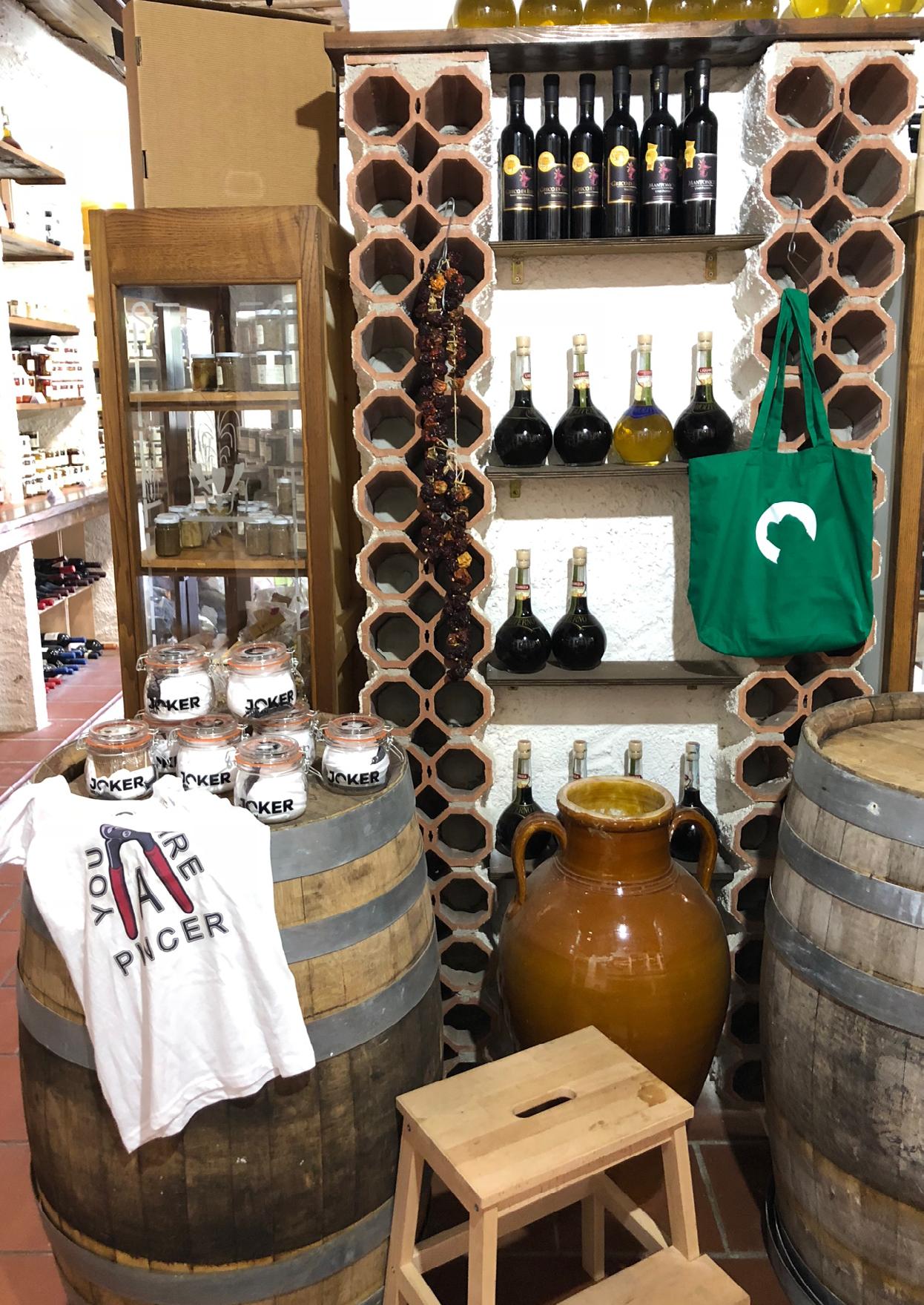
animals with kids the earth

THE RECIPES OF OUR CHEFS
SUPPLÌ AL
TELEFONO
“Telephone” Mozzarella Rice Balls
SERVES: 12
PREPARATION TIME: 1 HOUR AND 15 MINUTES
COOKING TIME: 15 MINUTES
INGREDIENTS
1 clove garlic, crushed
250gr passata
700ml vegetable stock
200gr risotto rice
2 tbsp That’s Amore Grated
Parmesan
2 eggs
Salt & pepper to taste
100gr breadcrumbs
125gr That’s Amore Fior di Latte
Canola or olive oil
METHOD
For the risotto
Gently heat oil in a pot. Add garlic and cook until softened but not colored. Add passata and salt to taste. Bring to a simmer and cook uncovered for 20 mins. In the meantime, bring vegetable stock to a boil in a separate pot.
When the passata is cooked (oil should have floated to the top), add the rice and cook until the liquid is mostly absorbed. Add a ladle of stock and stir until liquid is absorbed, stirring continuously.
Repeat, adding one ladle of stock at a time until the rice is tender but slightly undercooked. Remove from
heat. Add salt to taste and stir in parmesan. Spread over a tray to cool.
To make the supplì
Once the rice has cooled, whisk eggs in a bowl. Prepare a separate bowl with breadcrumbs.
Slice That’s Amore Fior di Latte into 12 even strips. Divide rice into 12 even portions. Take an individual portion of rice and press it flat in the palm of your hand. Place a mozzarella strip in the center and roll until the rice forms an even cylinder.
Repeat for remaining portions of rice.
Dip each supplì in egg and coat with breadcrumbs.
Fill a deep pan with oil and bring to 180°C.
Fry two or three supplì at a time in the hot oil until golden.
Serve immediately to enjoy the hot, oozy cheese center.

58 Segmento Issue XXXII • Sep - Nov 2023
Recipes by That’s Amore Cheese A TAVOLA
RIGATONI ALLA RICOTTA
Rigatoni with ricotta
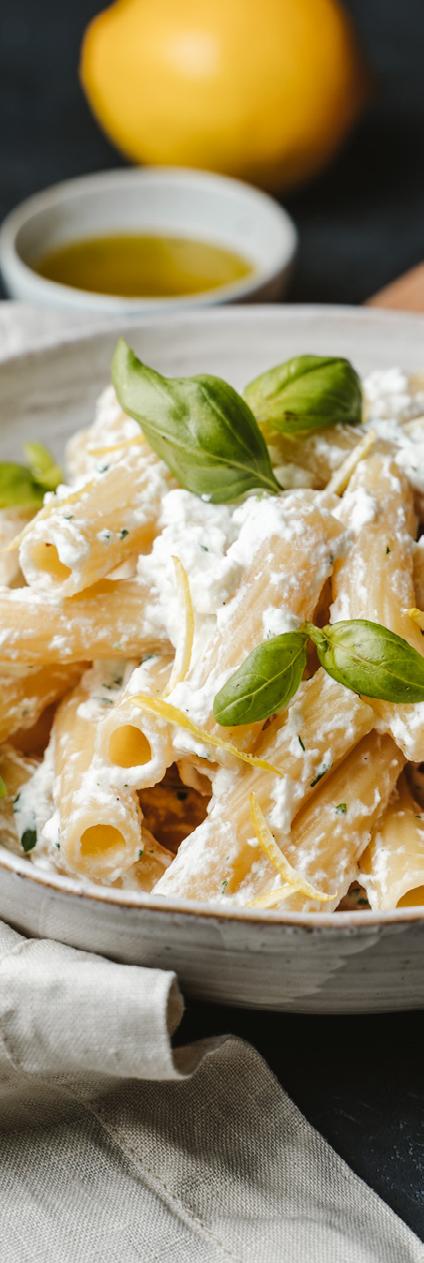
SERVES: 4
PREPARATION TIME: 10 MINUTES
COOKING TIME: 10 MINUTES
INGREDIENTS
FILLING
250g That’s Amore Buffalo Ricotta
1 handful parsley, finely chopped
1 tsp black pepper, or to taste
Half lemon zest
12 basil leaves
Extra virgin olive oil
METHOD
Bring salted water to a boil. Add pasta and cook as per instructions on the packet.
Add 250g of Buffalo Ricotta into a large bowl, crack in some black pepper, and add finely chopped parsley. Mix well.
Once the pasta is cooked, strain it and add it to the bowl with the ricotta mixture. Give the pasta a good toss until the ricotta is evenly mixed throughout the pasta to obtain a nice thick, creamy texture. Add lemon zest and plate up.
Finish with basil leaves and sprinkle with extra virgin olive oil.
59 Segmento Issue XXXII • Sep - Nov 2023
BUON APPETITO! A
Recipes by That’s Amore Cheese
Tavola
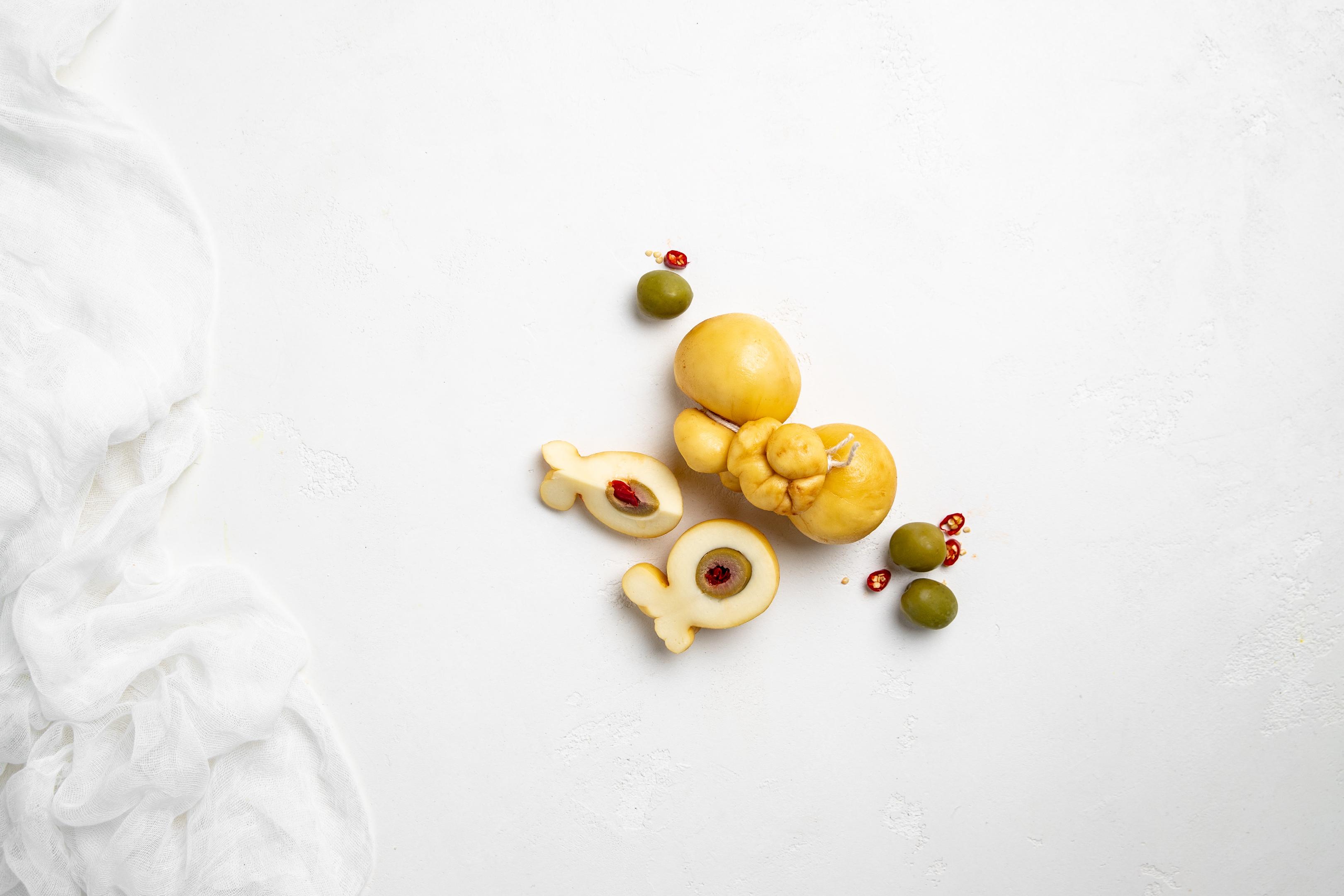

winning cheese!
@thatsamorecheese
Award
thatsamorecheese.com.au
THAT’S AMORE CHEESE UNA STORIA ITALIANA
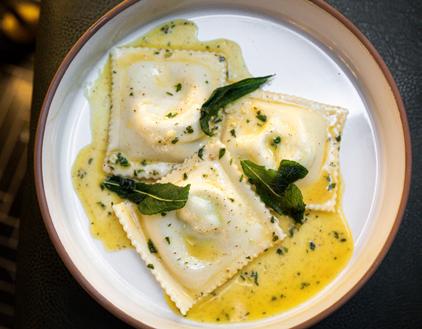 by Lorenza Bini | Photography by Silvia Zanon
by Lorenza Bini | Photography by Silvia Zanon
Over the years, I followed the unstoppable success story of Giorgio Linguanti, and I kept eating his products. So, when Segmento asked me to attend the celebration event of That’s Amore Cheese’s 15th anniversary, it felt like attending an old friend’s party.
Istill remember with pleasure and surprise when I had just arrived in Australia and stumbled upon Giorgio Linguanti’s handmade mozzarella in Carlton. It was the early days, and like many others who had recently moved to Melbourne, I began to feel eternally grateful to those who made us feel at home by producing authentic mozzarella, irresistible burrata, and many other delicious Italian cheeses.
Giorgio Linguanti’s love for cheese began in the picturesque countryside of Sicily, where he spent his formative years. Growing up with the scents of freshly crafted mozzarella and the sights of bubbling vats of ricotta ignited Giorgio’s passion for cheese. He was destined to bring the rich tradition of Italian cheesemaking to the Australian culinary scene. In 2008 he founded That’s Amore Cheese, which, for 15 years, has retained a loyal customer base that includes top restaurants.
Giorgio welcomed us with a warm smile at the event to celebrate the company’s fifteenth anniversary. The spacious hall in Collingwood was packed with guests, and the live music from Bella Ciao, an Italian musical trio made up of Vincenzo Ruberto (bass), Salvatore Greco (accordion), and Enio Pozzebon (piano and vocals), added to the festive atmosphere.
In a spacious open kitchen at the back, chefs and sous-chefs were bustling about.

61
Ravioli by That's Amore Cheese
BUSINESS & INNOVATION Segmento Issue XXXII • Sep - Nov 2023
Giorgio Linguanti
I caught a glimpse of Guy Grossi busy in the kitchen, it looked promising...
The delectable four-course dinner was masterminded by a team of three celebrity guest chefs: Guy Grossi, Adam D’Sylva, and Darren Purchese. The wine selection, curated by Vinea Marson, perfectly complemented the culinary delights.

Guy Grossi is chef of Grossi Florentino (Florentino, Grill, and Cellar Bar), Ombra, Garum Perth, and Settimo Brisbane. He is one of Australia’s leading Italian
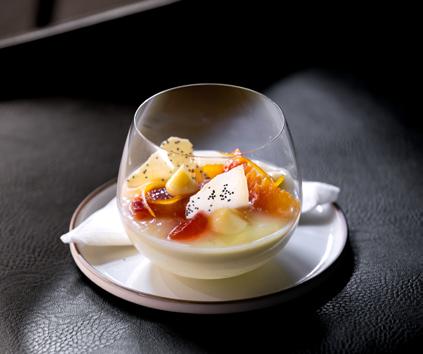 Adam D. Sylva, Darren Purchese, and Guy Grossi
Adam D. Sylva, Darren Purchese, and Guy Grossi
62 BUSINESS & INNOVATION Segmento Issue XXXII • Sep - Nov 2023
The 15th anniversary of That’s Amore Cheese
chefs, a media personality, and a trusted author of multiple cookbooks, including Recipes from My Mother’s Kitchen, Cellar Bar, and Love Italy.




Adam D’Sylva is the founder of Coda & Tonka and co-owner of Boca Gelato. Adam won The Age Good Food Guide ’s Young Chef of the Year in 2008 and has appeared on major Australian television cooking shows such as Masterchef, Everyday Gourmet , and Ready Steady Cook . Adam is currently working on opening a new venue which we can’t wait to see.
Darren Purchese, chef, author, and television host, is a proud ambassador for That’s Amore Cheese and is the new judge on Foxtel’s The Great Australian Bake Off. He created and operated the popular Burch & Purchese Sweet Studio for 12 years before moving on to his new venture Studio Kitchen. Darren is a regular guest chef on Masterchef Australia and the author of five cookbooks.
Vinea Marson is the Marson family’s slice of Italy in rural Victoria. From humble beginnings in Mario’s father Giuseppe’s suburban backyard vineyard, the father-daughter winemaking duo Mario and Madeleine Marson continue a winemaking tradition that goes back at least five generations in Friuli. The family’s vineyards were established in 2000 with a focus on Sangiovese, Nebbiolo, and Barbera before expanding to a heritage range of north-Italian white wines, including Grazia , a complex blend named in honor of Mario’s mother.
Chatting with Giorgio Linguanti after dinner, he emphasized the importance of loving what you do, working hard, and having meaningful encounters. Promoting high-quality traditional products, education, and passion encapsulate the philosophy of the brand’s creator. Plans to expand the brand, new ideas, and a project in America are in store for the future. “Every day is a new adventure,” says Giorgio Linguanti.
Notable guests included the Italian Consul Hanna Pappalardo and the Italian Chamber of Commerce SecretaryGeneral, Veronica Misciatelli.
63
BUSINESS & INNOVATION Segmento Issue XXXII • Sep - Nov 2023
Giorgio Linguanti with Chrissie Swan and Khanh Ong
ART OR BUSINESS? WHY CHOOSE?
A SUCCESSFUL LAWYER AND SPORTS AGENT CHANGES TRACK TO WRITE LOVE STORIES
by Ambra Dalmasso
Multi-talented Daniela Santelli has turned her passion into professional success. From a wellknown lawyer to a respected sports agent, we spoke to her about her latest incarnation as a debut novelist and her first foray into film.
What led you to explore so many different sectors? Please tell us a bit about your professional journey.
I am a woman who, above all, hates boredom. Being eclectic, I need to feel alive and experience the “thrill” of trying my hand at different things. I have loved soccer since I was little, and I used to watch Inter Milan matches with my father. I wanted to become a doctor and study in Naples, but, being very much engaged at the time, I decided to enroll in law at Catanzaro. This later allowed me to combine my studies with my passion for soccer when I became a sports agent and National Director of E.S.S.E Soccer (The European Social Sports Body). I have also been running the online magazine It Cosenza for four years now. As for writing, it has always been another great passion of mine that I inherited from my mother. At five, I was writing poems for my grandmother. Then by chance or by fate, a relationship that ended badly prompted me to write my debut novel, A un passo dal cuore, published by Bertoni in 2018. Please describe the moment you realized you wanted to write and share this story. How did you get into writing, and what was the publishing process like?
Writing has always been a passion of
mine. It was also therapeutic for me. During sleepless nights, the PC became like a best friend in whom I confided my wonderful love story and its sad ending. A un passo dal cuore was born as an ordinary diary that I wrote in the evenings after I got home. It was a way to exorcise my pain and anger and transform them into something beautiful. Then one day, a mystery writer called Stefano Milighetti sent me a friend request on Facebook. He became my proofreader. Together we decided that the captivating story of Giulia and Stefano deserved to be published. Stefano suggested I approach Bertoni, an independent publishing house that focuses on quality, not quantity. They helped me bring my dream to life.
Can you tell us a little about the process of becoming a bestselling novelist? What are the challenges and surprises (good or bad!) that you have encountered along the way?
I never could have expected this level of success, especially because it is my first novel! Being published by a publishing house in the north was a source of great pride for me as a Calabrian. Actually, I’ve always believed that this book was magical because of the great love it contains. Love can only bring about beautiful things. However, I know that success can bring happiness and unpleasant things,

Segmento Issue XXXII • Sep - Nov 2023
64 BUSINESS & INNOVATION
like jealousy and unnecessary nastiness. Nevertheless, I am strong and can transform the negative into a positive. In the end, I laugh it off and go on with my life, happy with the fact that I have managed to achieve my goals with dignity and respect in every field, not trampling on anyone and paying nothing. Nowadays, money can buy almost anything, but it can’t buy talent.
Your novel has also become a successful short film directed by Giuliano Pagani, produced by Ermanno Reda with cinematography by Gianfranco Confessore. It was nominated for the Sorriso Rai Cinema Channel award at the Tulipani di Seta Nera International Social Film Festival, coming in fifth place. How did the idea come about, and how was the experience?
It all started by accident. On New Year’s Day last year, I decided on a whim to submit the film to the festival. We were selected from among 600 Italian and international short films, finishing fifth in the web category. It was a very emotional moment for me and the others who participated in the project.
The short film was shot between Rende and Cosenza: how important is the relationship with this area?
I really wanted the film to be shot in my
region of Calabria because I believe in the value of a sense of belonging. It was shot exactly between Rende and Cosenza, with some scenes on the Tyrrhenian coast. I am Calabrian, I could not have imagined doing it in any other way. Calabria is a land of talented individuals in all sorts of sectors and a beautiful region that deserves visibility and respect.
Rumor has it there are some exciting prospects on your horizon in the form of a feature film project and a sequel to your novel. What can you tell us at this point about what is in store?
It’s true! A film studio in Rome has picked up the novel. There is a lot of enthusiasm. I fully trust the studio and the director. I have established a relationship of artistic synergy and respect with them. As for my second novel, it is a sequel to the first but with some changes on the publishing side that I can’t reveal yet. It comes out next year. Giulia’s love story continues, but some important changes will shake up her life with twists and turns until the last page.
65 Segmento Issue XXXII • Sep - Nov 2023 BUSINESS & INNOVATION
ITALIAN TRADE WITH AUSTRALIA A PICTURE OF SURPRISING RESILIENCE?
by Bruno Mascitelli
Disruptions to trade caused by the pandemic had a serious impact on the economies of both Italy and Australia. As the world economic situation finds a new equilibrium, it is worth taking stock of the trade balance sheet between the two countries.

Italy was one of the nations most severely affected by COVID-19 in human and economic terms. It was European ground-zero for COVID-19, suffered the most deaths, and was the first EU nation to enact serious lockdowns. The situation was so bad that the Italian government accused the EU of being slow in coming to Italy’s aid. The neglect was such that European Commission boss Ursula Van Der Leyen issued a “heartfelt apology” to Italy for not helping at the start of its deadly coronavirus outbreak.
Responding to the serious impact of COVID-19 on Italy, the EU decided that Italy would be the biggest beneficiary of the EU’s 724 billion euro post-pandemic recovery fund (RRF). Unsurprisingly, spending the recovery fund within the time limits will not be simple for Italy. A change in governments (from technocrat Mario Draghi to populist Georgia Meloni in September 2022) and, with it, a change of agendas in Rome, along with stringent processes imposed by Brussels, means releasing these funds has been a tortuous process.
ITALIAN TRADE WITH AUSTRALIA
Given the economic difficulties of the last few years in Italy, the country’s trade resilience with many partners, including Australia, is somewhat surprising, especially regarding exports. Over $A8 billion worth of Italian imports were sold to Australia against $A1.4 billion of Australian exports sent to Italy. Italian pharmaceutical products, travel goods, and heating and cooling equipment were the main items arriving from Italy. In the case of Australian exports to Italy, wool, coal, and aluminum made up the bulk of exports.
EUROPEAN PARTNERS AND TRADE
Australian exports from and imports to key European partners in $A billion
Source: DFAT, August 2023
66 Segmento Issue XXXII • Sep - Nov 2023
BUSINESS & INNOVATION
UK Germany France Italy Exports 7.7 5.7 3.2 1.4 Imports 14.2 20.8 7.3 8.6 Total trade 22.02 26.5 10.677 10.125
INVESTMENT
Another measure of the economic relationship is investment between the two countries. Australian investment in Italy is more than twice Italian investment in Australia. In 2021, the total stock of investment between Italy and Australia was valued at $A11.3 billion, while the Australian total stock of investment in Italy totaled $A8.7 billion. Australian companies with a presence in Italy include Lendlease, which has a major contract to create the Milan Innovation District on the former Expo 2015 site, and Macquarie, which is part-owner of Autostrade per l’Italia, one

of Europe’s largest toll road operators, and Open Fiber, a fiber to the home (FTTH) wholesaler. Italian investment in Australia is focused on infrastructure and energy, with major companies such as Webuild, Ghella, Rizzani de Eccher, Enel, and ENI involved in key projects.
Austrade, the Australian Trade and Investment Commission maintains a small office in Milan but has shifted its focus primarily to Italian investment attraction to Australia. Much of Australia’s trade is conducted by large enterprises directly through specified sales platforms.
67 Segmento Issue XXXII • Sep - Nov 2023
BUSINESS & INNOVATION
EUROPEAN UNION – AUSTRALIA FREE TRADE AGREEMENT
Another element in the Italy-Australia trade relationship are the ongoing Free Trade Agreement (FTA) between Australia and the European Union negotiations that began in July 2018. Even with the UK’s exit from the EU, its market portion remains sizeable. The EU is a high-income market of some 450 million people with a nominal GDP of US$16.6 trillion. As a bloc, it would be Australia’s third-largest two-way trading partner and secondlargest source of foreign investment. After a pause in negotiations resulting from the establishment of AUKUS, negotiations resumed with the direct involvement of
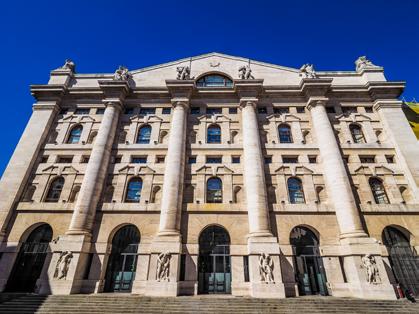
Australia’s Trade Minister, Don Farrell, who visited Brussels in early July. He visited the EU hoping to secure a better deal for Australia regarding agricultural quotas and regulations around geographic indicators related to the branding of products such as Prosecco, Feta cheese, and others. In both cases, Brussels was firm on these matters, and Australia has to decide whether to accept a deal in a form it did not want, to hold on for another opportunity, or to walk away.
Australia remains a significant trade and investment player in Europe even though its exports to Italy remain comparatively low. On the other hand, Italian exports to Australia continue to increase, reflecting Italy’s ability to add value to manufactured items despite Australia being a long way from Europe. Whenever it is concluded, the Free Trade Agreement between Australia and the EU will provide greater chances for all goods and services between the two sides, and especially for small and medium enterprises (SMEs), to join the export figures. The EU and Australia indicate in their communications that SMEs will be winners of this agreement.

68 Segmento Issue XXXII • Sep - Nov 2023
BUSINESS & INNOVATION
Australia’s Trade Minister, Don Farrell
The International Specialised Skills Institute

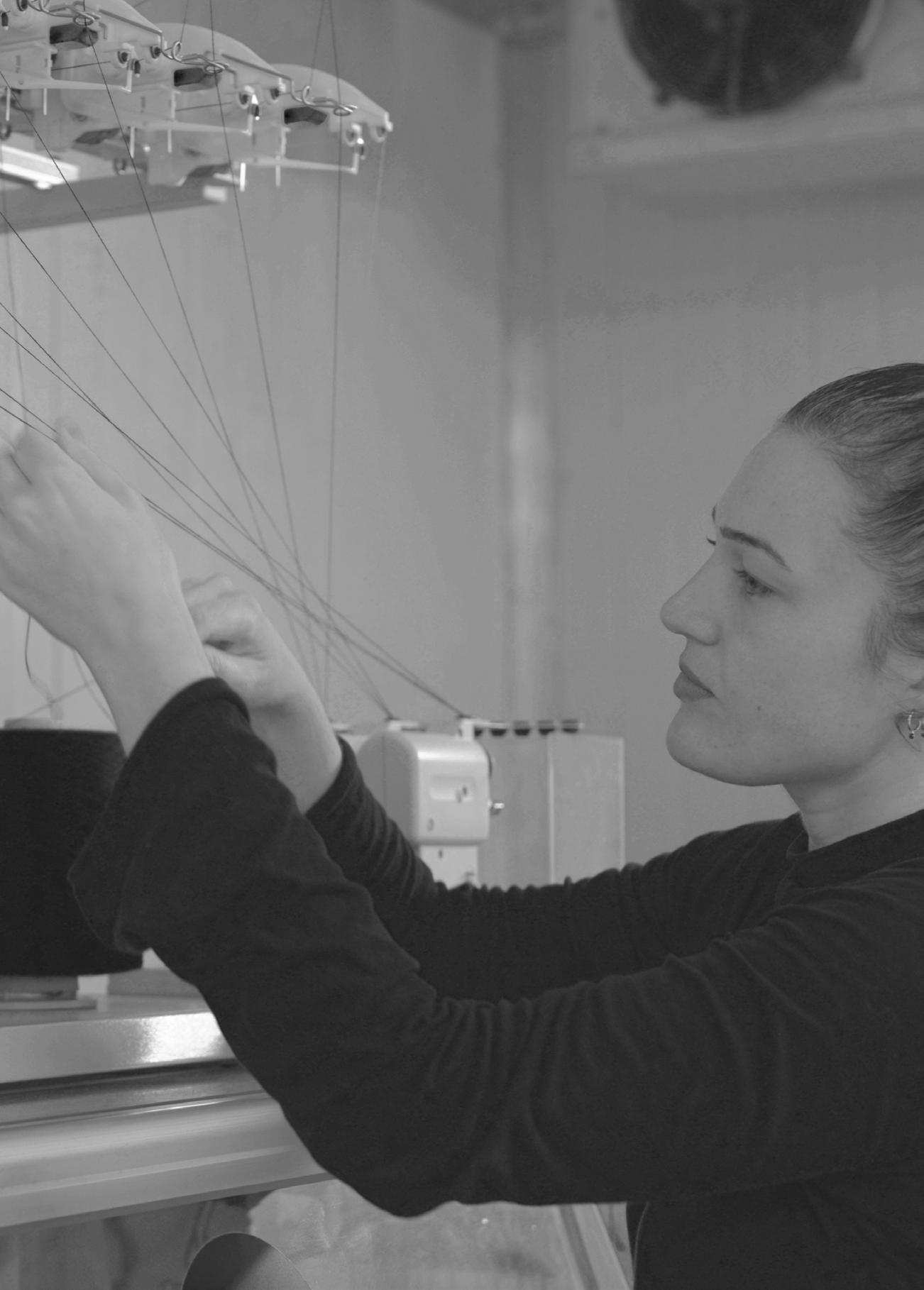
Direct action to build a better skilled Australia
The International Specialised Skills Institute (ISS Institute) exists to develop an innovative, skilled, and smart Australia by cultivating the mastery and knowledge of talented Australians through international applied research (i.e., industry-based) Fellowships.
www.issinstitute.org.au

a registered
go directly to
and education
The ISS Institute is
charity. All donations are fully tax deductible and
fund Fellowships
programs for Fellows.
Institute
Picture credit: Kyle Palmer, The International Specialised Skills
2023


CONNECTING CULTURE, INSPIRING HARMONY
A NEW ERA FOR OLD TRADITIONS
by Giovanni Butera | Photography by Wild Hardt
In a world that’s becoming increasingly interconnected, preserving and celebrating cultural traditions has taken on a new significance. Technology is sweeping us along at breakneck speed, changing the way we relate to the world and others; the centripetal force of globalization is increasingly homogenizing the whole world into a bland pastiche, and the generation of people who had a closer link to the land and to the past are passing on. We are facing a potential extinction crisis of folk knowledge, tradition, and culture, and we urgently need to bridge the gap between the elderly and young generations, the familiar and the foreign, to restore balance and ensure that we save as much as we can. Celebrating cultural and folklore traditions may well be the way forward. Honoring our roots becomes the gateway to a culturally richer and more harmonious world. Traditions are the threads that weave the tapestry of our identity, reflecting the collective wisdom, beliefs, and values of generations past. They offer us a window into the stories of those who came before us, providing insights into their struggles, triumphs, and the ways they found meaning in the world. However, as the tides of time continue to shift, traditions often find themselves at a crossroads, and that is when the old can meet the new in a dance of cultural exchange, where the rhythms of history converge with the beats of progress.
As we open ourselves to the riches of other cultures, we realize that there is a profound beauty in the diversity of human expression. The melodies of different traditions can harmonize, creating a symphony of cultural understanding and appreciation. These connections do not

72 UNDER THE COVER
Segmento Issue XXXII • Sep - Nov 2023
Dorcas Maphakela
erase the boundaries that define us but invite us to explore our shared humanity. We learn that despite our differences, universal threads tie us together–compassion, empathy, and the pursuit of a better future for ourselves and future generations.

Segmento shares this vision with the Victorian Multicultural Commission, which organized the photographic exhibition “Capturing Culture: Multicultural Victoria in Focus” last year. The exhibition was held at Melbourne’s Immigration Museum and celebrated the resilience of Victoria’s multicultural communities. Capturing Culture presented the resilience and lived experiences of multicultural communities and created a visual record that captured the vibrancy and connectedness of multicultural communities.
A Segmento honorable mention goes to the winner of the Minister’s Choice Award in the VMC’s Capturing Culture photographic competition. The Love you Give , is a photograph of an actress taken at the shoot of a reimagining of The Trojan Women . We simply had to include this photograph in this issue celebrating cultural links, old and new, because it is the fruit of a meeting of minds across the centuries and the continents–fifth-century BCE Athenian playwright Euripides and 21stcentury Melbourne-raised Chilean photographer Alejandra Olavarria.
Undercover the 73
Segmento Issue XXXII • Sep - Nov 2023
The Love you Give by Alejandra Olavarria
One of the competition categories (faces) showcased the diverse visages of Australia’s multicultural landscape and the stories behind them. For the cover of this issue of Segmento, we selected Dorcas, a portrait of Dorcas Maphakela by Deshani Berhardt, a photographer and graphic designer originally from Sri Lanka, now living in Melbourne.
Deshani says she chose the faces category because the submission required a statement explaining the story told by the image, and to her, there was no better way than including a quote by Dorcas, the person the story is about, “a beautiful, strong woman that inspires me.”

South African-Australian Dorcas Maphakela describes herself as “a dynamic doer who wears many hats.” She is a community leader, writer, visual artist, lecturer at the University of Melbourne,
TV presenter, public speaker, and holistic well-being advocate who uses art and words to share knowledge and inspire people to live deeply fulfilling lives. She founded Oz African TV (OATV), an award-winning digital platform for and about the African diaspora in Australia, and co-founded Yo CiTY, a platform that champions cultural diversity through art and music. She works as a Producer and Creative Agency Manager at Multicultural Arts Victoria (MAV).
Her work was acknowledged with a Media Award from the Victorian Multicultural Commission for “outstanding reporting on issues of importance to diverse communities and reporting which contributes to Victoria’s cross-cultural understanding.” When Segmento spoke to Dorcas, she pointed out that multiculturalism is not simply about politically correct optics and that minority
74 Segmento Issue XXXII • Sep - Nov 2023 UNDER THE COVER
Dorcas Maphakela
ethnic people should not be treated as tokens:
I work in a space where we champion the fact that each of us should strive as we are, still sharing, appreciating, and connecting with other people. In my case, I come from South Africa, and as I work in a place where the majority of people are African, there is an expectation that I represent that group of people by default. Sometimes I think it’s unfair, sometimes, I think I am privileged. However, I have also learned that people classified as “culturally diverse” are often put into a box.
In light of this warning, when we asked her about what she thought about the theme of this issue of Segmento, “connecting cultures,” she smiled and said:
I like that! “Connecting cultures” acknowledges that there are many different cultures and that our objective is not one of assimilation; we can connect as people on common grounds, on similar values such as compassion and empathy, and the pursuit of peace and harmony.
We chose this photo for our cover image because it was produced in the context of a celebration of multicultural identities and because of Dorcas’ inspiring personality. It represents a triptych: an artwork with three elements. In our case, the beautiful photograph by Deshani Berhardt itself; the subject of Dorcas and her story, and, finally, our own response as viewers of the photograph as we contemplate the significance of the theme of “Connecting Cultures: Inspiring Harmony.”

75 Segmento Issue XXXII • Sep - Nov 2023 UNDER THE COVER
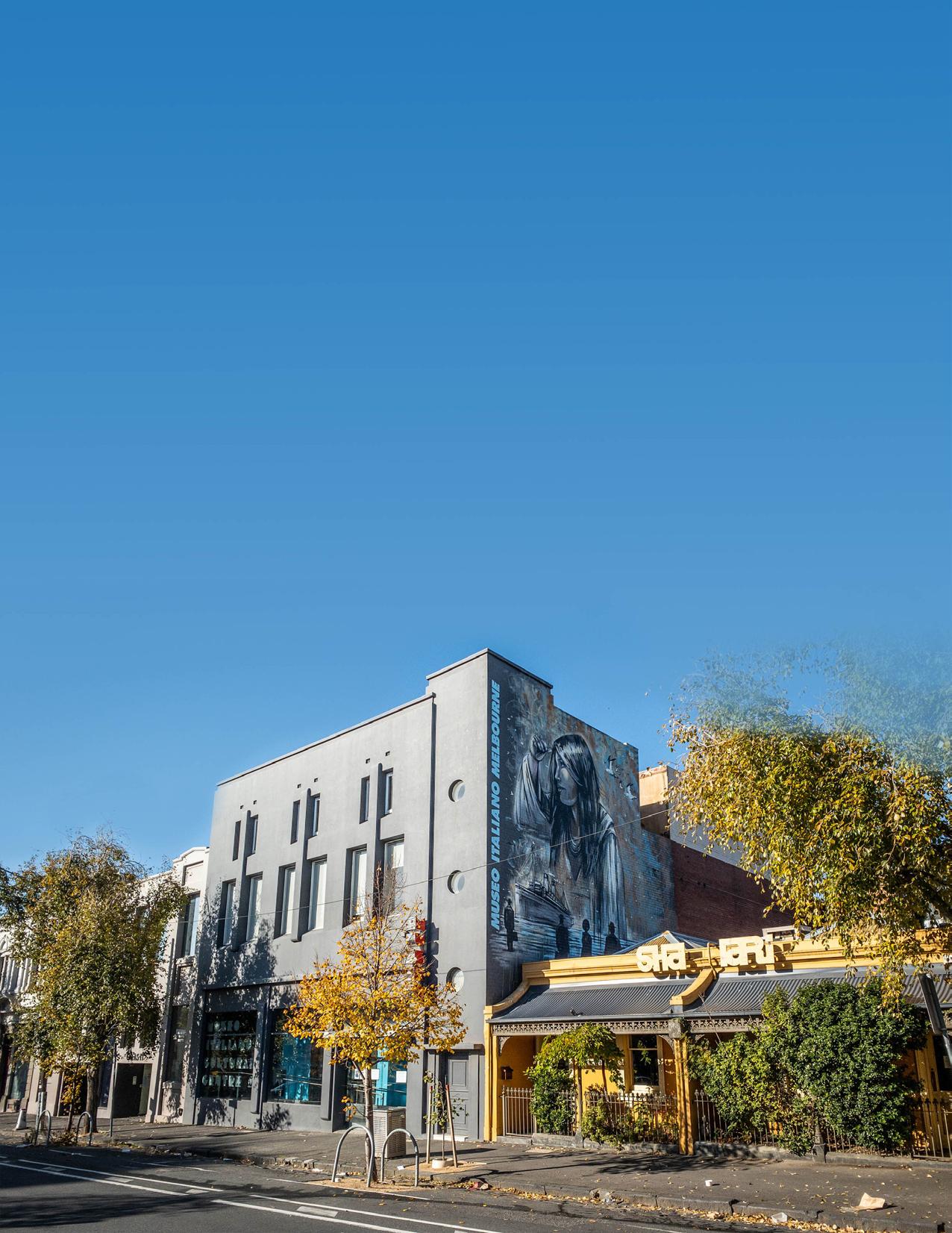





We do we care for “ “ what we do best: our community CO.AS.IT. Italian Assistance Association AGED CARE SERVICES • ITALIAN CLASSES • CULTURAL EVENTS RESOURCE CENTRE • ITALIAN HISTORICAL SOCIETY • MUSEO ITALIANO 189 Faraday Street, Carlton 3053 VIC 03 9349 9000 coasit.com.au coasit@coasit.com.au
FEATURING CHRISTOPHER FOTHERINGHAM

Ciao a tutti,

I am from Johannesburg but now live in the countryside outside Lucca in northern Tuscany, where my mother was born and lived before immigrating to South Africa with my grandparents and her sisters in the late 1950s. I grew up with colorful stories about their shenanigans in a workingclass, multicultural part of the city among
their Jewish, Greek, Portuguese, and Italian neighbors, so different from the stuffy private-school upbringing my father experienced. I think the warmth of an Italian family is part of what made him fall in love with my mum. While it seems silly nowadays, entering into a multicultural marriage was a brave move in the solidly conservative and highly stratified society of 1970s South Africa. Despite my decidedly British surname and my highland looks, my italianità has always been very important to me. I studied Italian at school and university, majoring in Italian, French, and Linguistics. I completed my PhD in translation studies with a thesis on Italian Postcolonial Literature in 2016. After working at the University of the Witwatersrand as a lecturer for ten years, I decided to move to Italy in 2021, where I now freelance as a translator and editor. I joined Segmento this year; this is the third issue I have worked on as copy editor and translator. My personal story as a 2nd-generation immigrant, and now an immigrant myself, helps me relate to the stories we showcase in the magazine, and helping bring the best out of our amazing writers is a highlight of the job.

Unapologetics Meet
Team IN EACH ISSUE, WE INTRODUCE ONE OF
77 the Segmento Issue XXXII • Sep - Nov 2023
Our
OUR TEAM MEMBERS
DISCOVER MORE ABOUT ITALY AND ALL THINGS ITALIAN



Scoperta Alla
Alec Morris pays tribute to his Italian-Australian heritage with his debut cookbook Pasta et Al. Morris. Morris has collated a collection of over 60 traditional and contemporary pasta recipes along with a lifetime of memories that will inspire any Italophile or pasta lover.
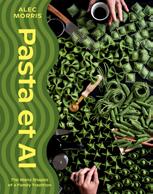
We recommend it because …
Renowned cookbook author Emiko Davies describes Morris’ debut offering as “a big-hearted, thoughtful cookbook that will teach you not only how to make beautiful, traditional pasta shapes but how to get playful and creative with colors and flavors too.”
Since taking the top prize at the 2021 Eurovision Song Contest, Italian rock group Måneskin’s star has continued to rise. The group has scored a Grammy nomination and an MTV award, fronted a campaign for Gucci, and lent their vocals to the soundtrack for Baz Luhrmann’s Elvis.

We recommend it because …
Their latest record reached the top 40 in the US, UK, and Australia, featuring hits Gossip with Tom Morello and Supermodel. The group is in the midst of an international tour which includes four shows in Australia in support of their latest album Rush!

Ti Mangio il Cuore (Burning Hearts)
Italian songstress Elodie makes her Australian cinematic debut at the highly anticipated 2023 St. Ali Italian Film Festival. The Bagno a Mezzanotte hitmaker stars in the gripping mafia drama Ti Mangio il Cuore (Burning Hearts).
We recommend it because …
The film premiered at the 2022 Venice Film Festival and won the prestigious David Di Donatello Award for Best Original Song. Catch it at the 2023 St. Ali Italian Film Festival running from September 19 to October 25
78
Rush! by Måneskin
Pasta et Al by Alec Morris
Segmento Issue XXXII • Sep - Nov 2023
Southern Italian Music and Dance
AUSTRALIA - NOVEMBRE 2023

8 Nov Darebin Arts Centre | Press Conference



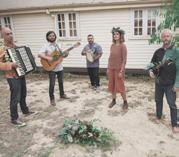


12 Nov Geelong – Club Italia | Concert
15 Nov Melbourne – Australian Calabrian Cultural Association | Gala Dinner







17 Nov Darebin Art Centre | Opening Ceremony


19 Nov Shepparton Showgrounds | All Day Concert
21 Nov Melbourne JazzLab - Ciccio Nucera Quartet | Dinner Concert

25 Nov Reservoir - Edwardes Lake Park | All Day Concert
3 Dec Brunswick East - Abruzzo Club | Concert





TARANTELLA MUSIC AND DANCE PERFORMANCES

EXHIBITIONS OF TRADITIONAL MUSICAL INSTRUMENTS

TAMBURELLO AND DANCING WORKSHOPS
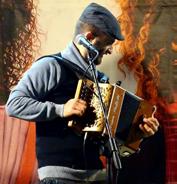
Proudly supported by
SPECIAL GUEST Annalisa Insardà
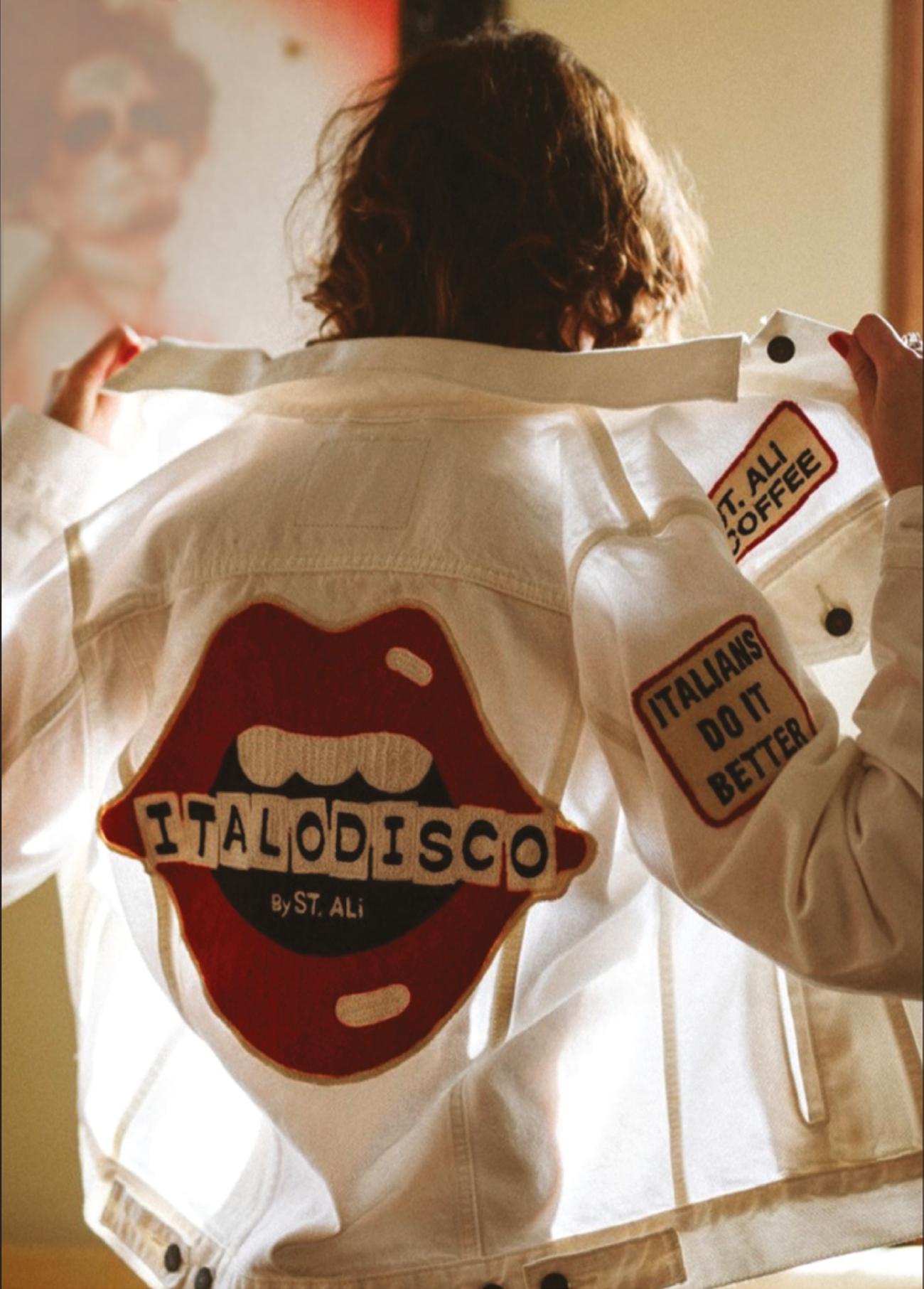
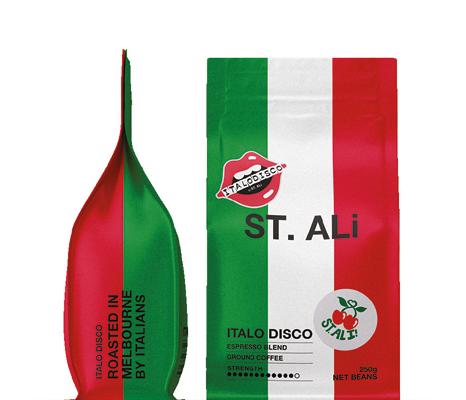


































































 by Christopher Fotheringham | Photography by Vincenzo Cascone
by Christopher Fotheringham | Photography by Vincenzo Cascone



























 by Daniele Foti-Cuzzola | Images provided by Victorian Multicultural Commision
by Daniele Foti-Cuzzola | Images provided by Victorian Multicultural Commision
















 Earrings by Chiara Jewellery
Necklace by Bini Gallery
Bini Jewellery is available from Gertie Gallery, 247 Gertrude Street, Fitzroy VIC 3065, Australia.
bini_gallery
Earrings by Chiara Jewellery
Necklace by Bini Gallery
Bini Jewellery is available from Gertie Gallery, 247 Gertrude Street, Fitzroy VIC 3065, Australia.
bini_gallery
 Adele and Cinzia from Studio Medea, Olivia Cummings from Cleopatra’s Bling, and Gabriella Picone from Idda Studio talk about the renewed interest in mythology and the timeless stories that inspire their work.
Adele and Cinzia from Studio Medea, Olivia Cummings from Cleopatra’s Bling, and Gabriella Picone from Idda Studio talk about the renewed interest in mythology and the timeless stories that inspire their work.


 by Elena Rajani | Photography by Elena Rajani
by Elena Rajani | Photography by Elena Rajani




















 by Daniele Foti-Cuzzola | Images provided by Emiko Davies
by Daniele Foti-Cuzzola | Images provided by Emiko Davies













 by Lorenza Bini | Photography by Silvia Zanon
by Lorenza Bini | Photography by Silvia Zanon


 Adam D. Sylva, Darren Purchese, and Guy Grossi
Adam D. Sylva, Darren Purchese, and Guy Grossi





































